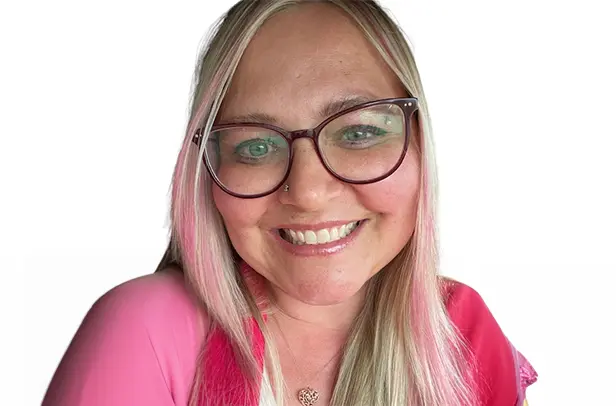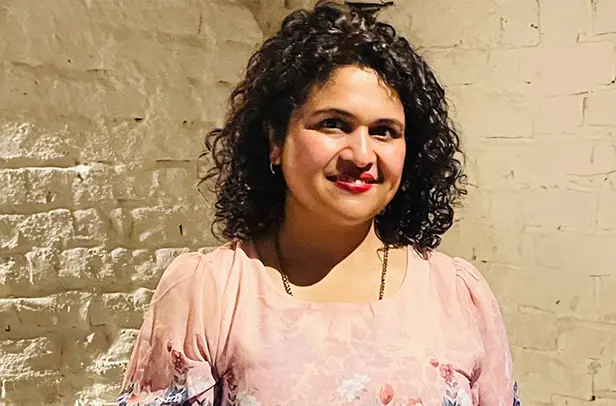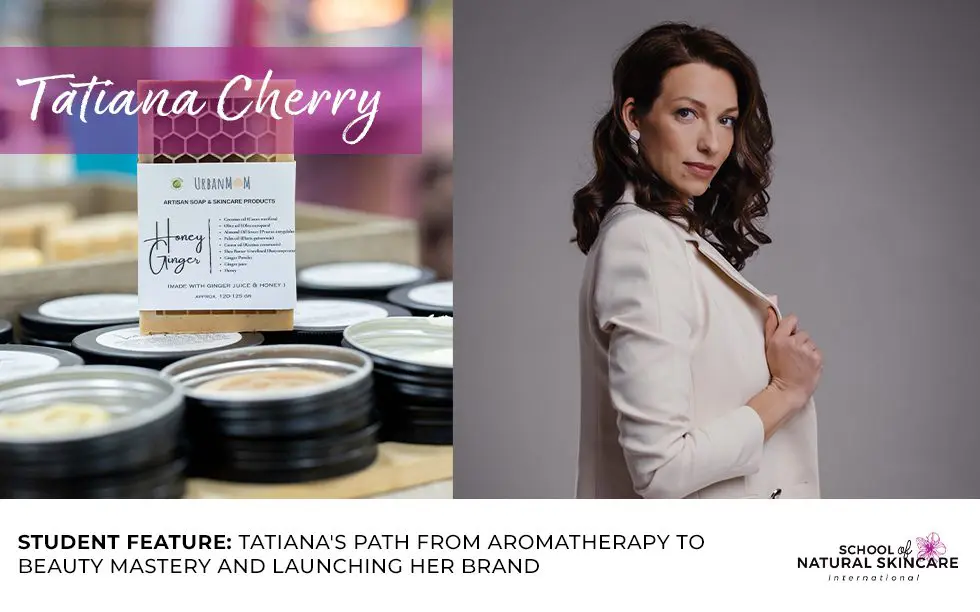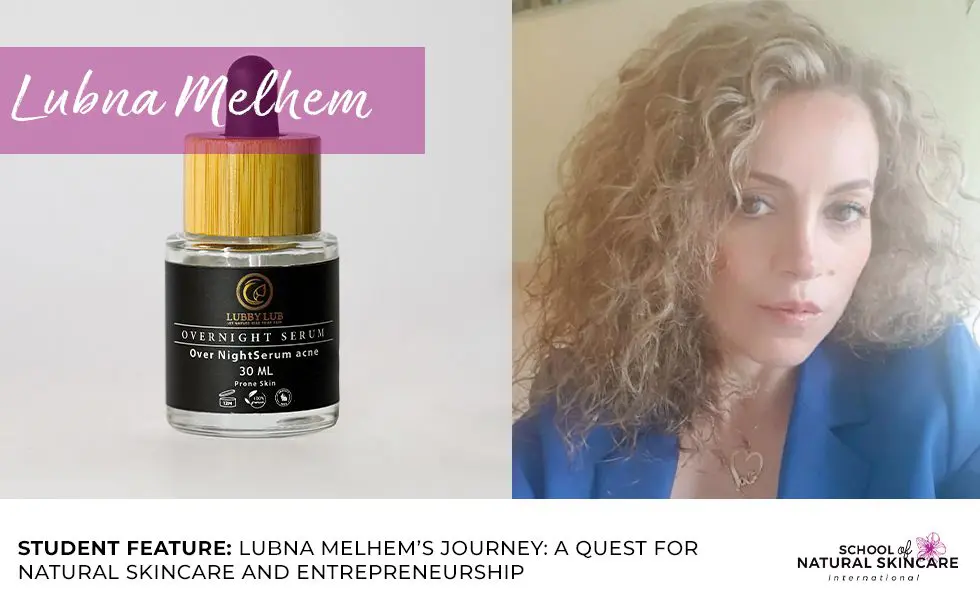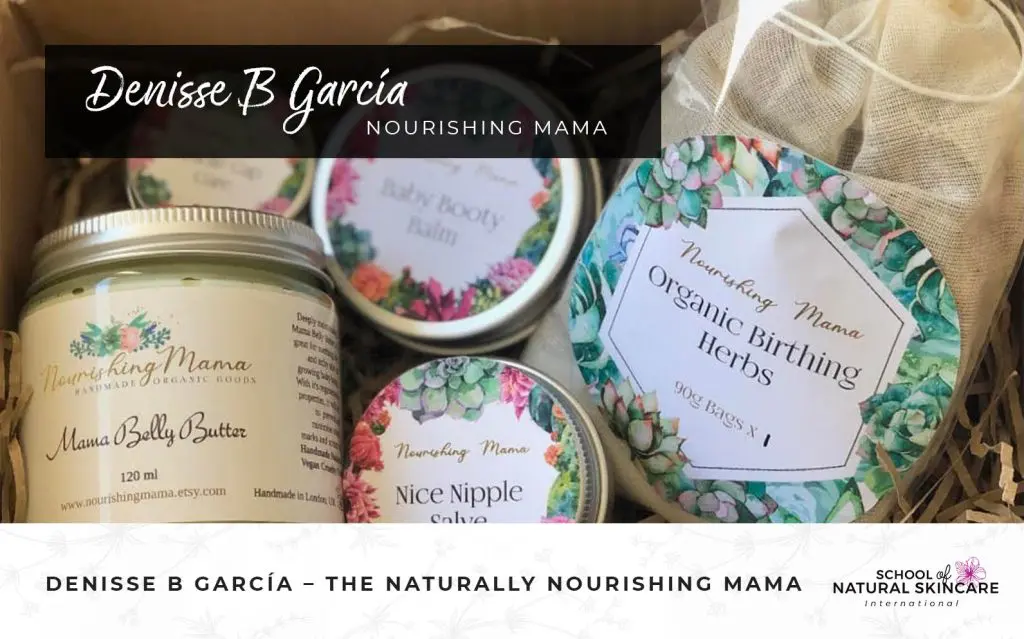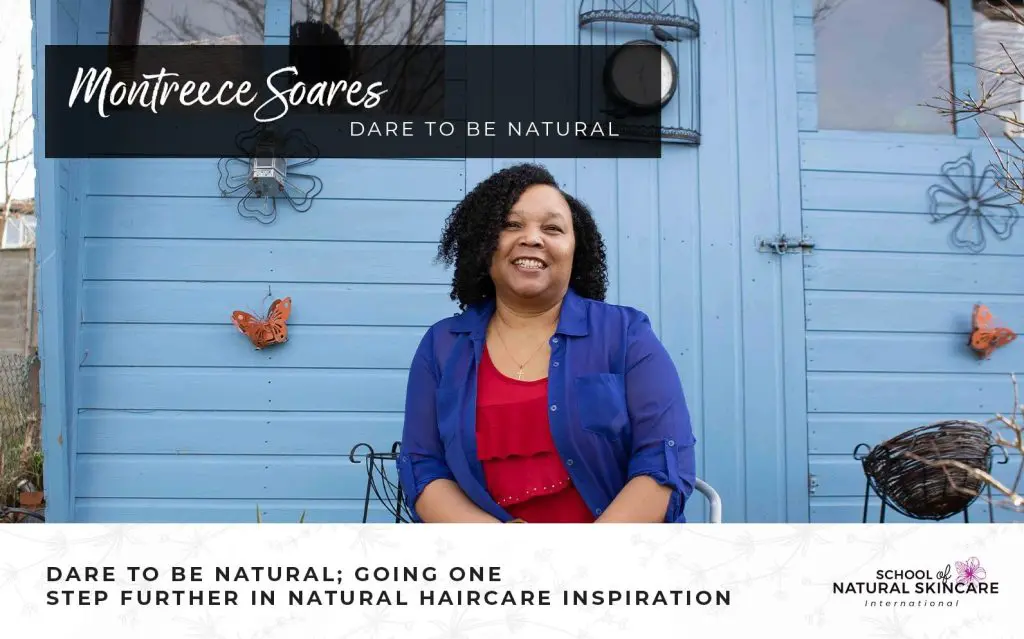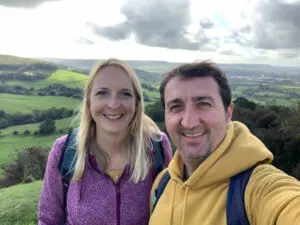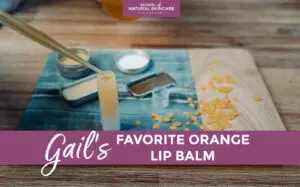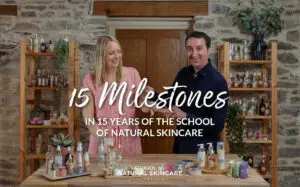Diploma in Soap Making
The most comprehensive online soap making course.
Learn how to confidently make your own cold process, hot process and liquid soap.
Are you new to soap making and looking forward to an exciting new hobby, but want expert guidance and reassurance to get started the right way?
Are you a keen soaper ready to learn advanced soap making techniques and make stunningly beautiful soap bars but are struggling to find higher-level instruction?
Are you passionate about a zero waste lifestyle, and perhaps even dream of creating soap to sell?
Introducing the Diploma in Soap Making
The most comprehensive online soap-making course available for learning to make cold process, hot process and liquid soap as well as advanced soap swirling techniques.
In this comprehensive course, you'll gain the skills and knowledge to:
- Make soap bars using two different methods: cold process and hot process soap making.
- Use a wide range of natural ingredients to create nourishing soap – carrier oils, plant butters, milk, yogurt, beer, honey, sugar, salt, botanicals, clay, charcoal and more!
- Design beautifully patterned soap with 10 soap swirling techniques and color your soaps with pigments and botanical colorants.
- Learn hot process soap making, for very quick-to-make and super nourishing soap bars.
- Create liquid soap for use on the hands and body, plus make a household cleaning soap for dish washing.
- Follow our recipes and formulate your own soap recipes. Create palm oil-free, vegan and/or organic soap if you wish.
Ready to make your own advanced natural and organic soaps for yourself or to sell?
Join us on the journey today!
Find out more
Master the science of saponification and stand out from the crowd by learning advanced soap making skills.
Move beyond creating basic bar soap to confidently create extra nourishing hot process soap, gorgeous swirled soap and versatile liquid soap knowing you’re learning from expert soap makers and experienced cosmetic scientists.
Understand the chemistry of soap making and formulate your own soap recipes by learning how different oils function in soap, how to use a soap calculator, how to control the superfat, and how to add advanced ingredients.
Just imagine how good it would feel if you could:
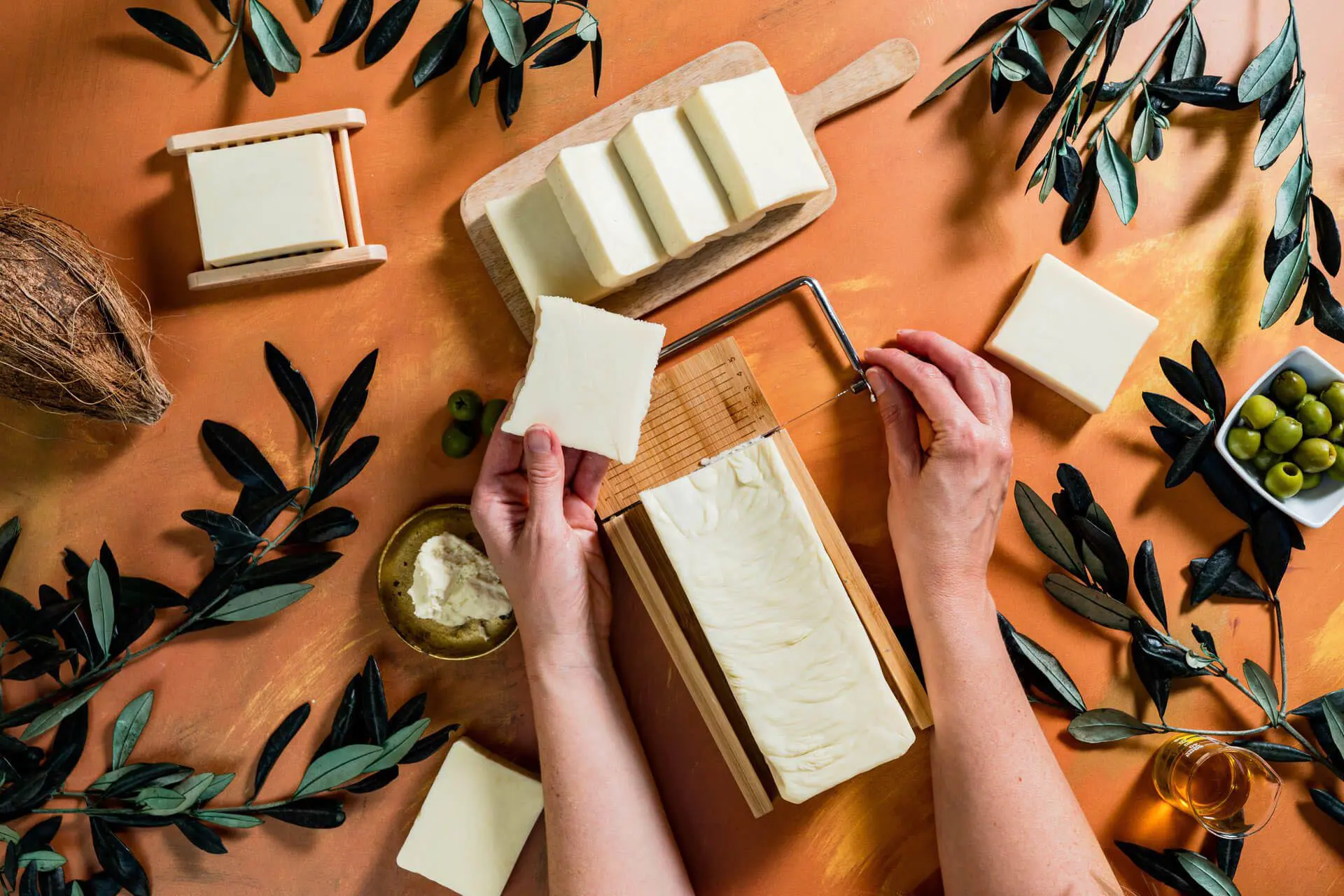
Create a complete range of soap using ingredients chosen by you
Release your inner scientist as you become a master at saponification and create a range of varied and advanced soap customized to your values. Explore your creative side as you use a wide range of natural, organic, and/or vegan ingredients that reflect your values.
Become the go-to soap making expert in your community
Become an expert in a whole new area of cosmetic science, and delve deeper into the subject than your average soaper with professional instruction and skilled support each step of the way.
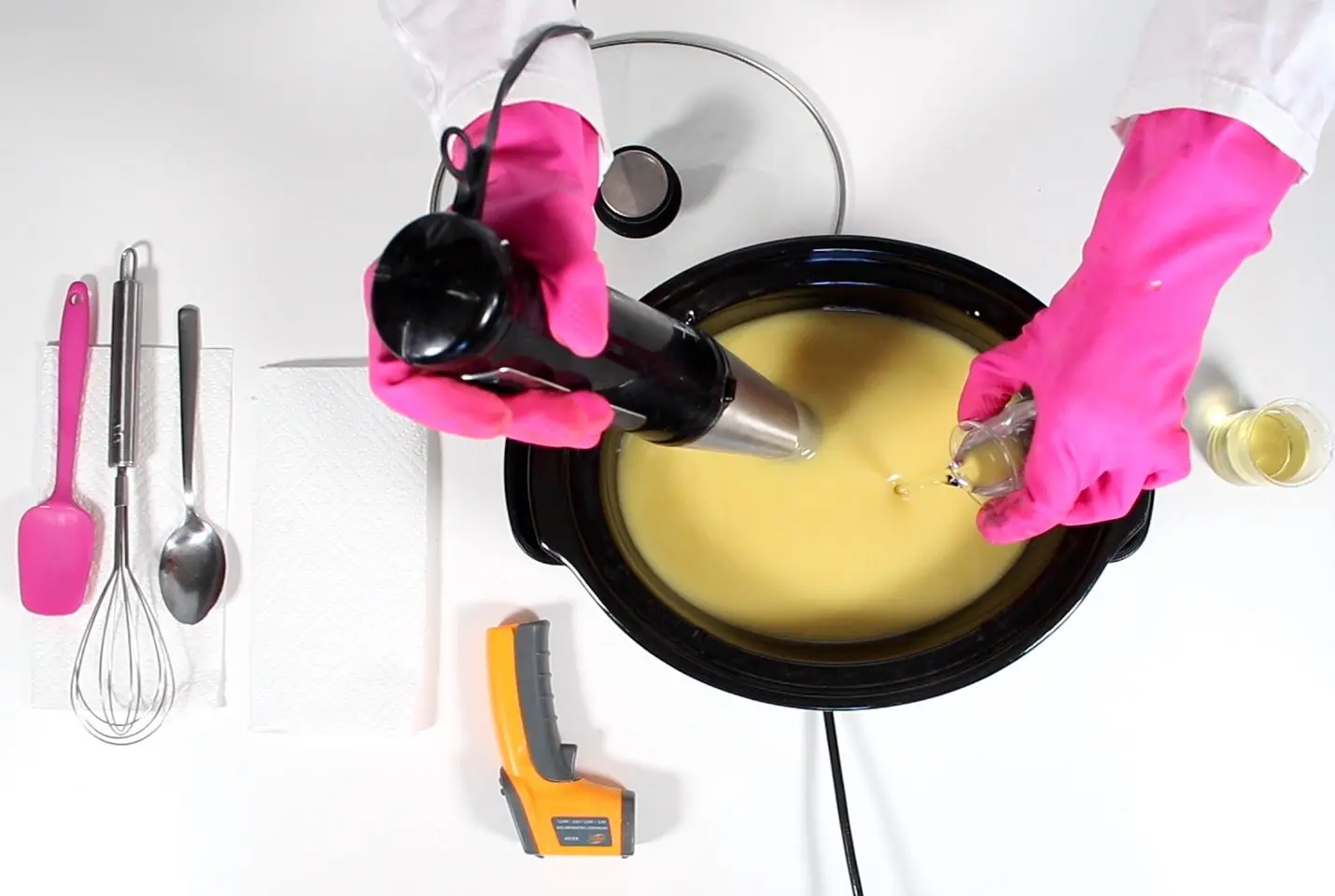
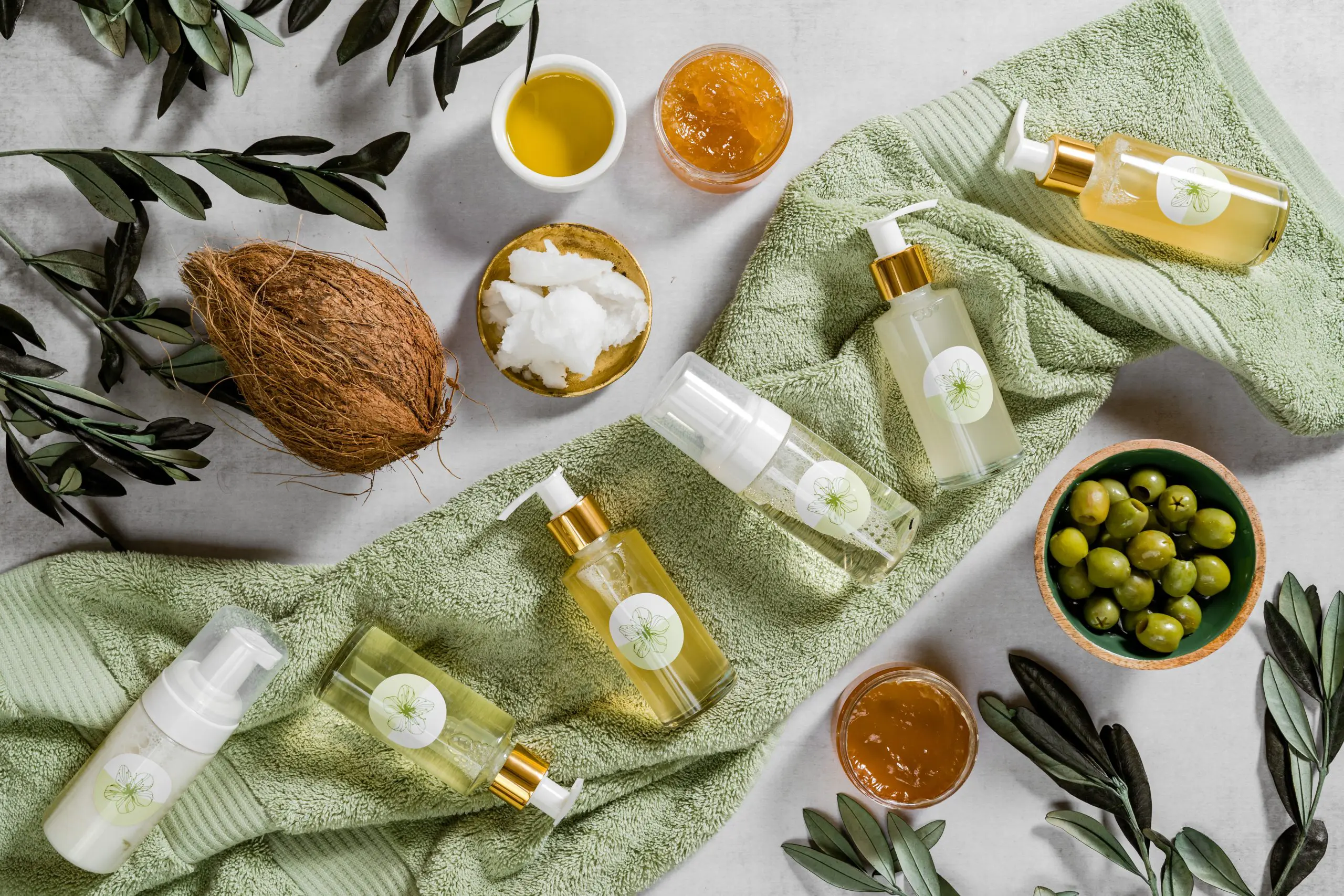
Empower yourself with skills that will last a lifetime
Take care of your health and hygiene, and that of your family, by making all the soap you’ll ever need. You’ll even be able to make household cleaning soap, too. They’re the perfect gift for friends and family or an ideal addition to your beauty brand range.
Learn to make a wide range of nourishing soaps:
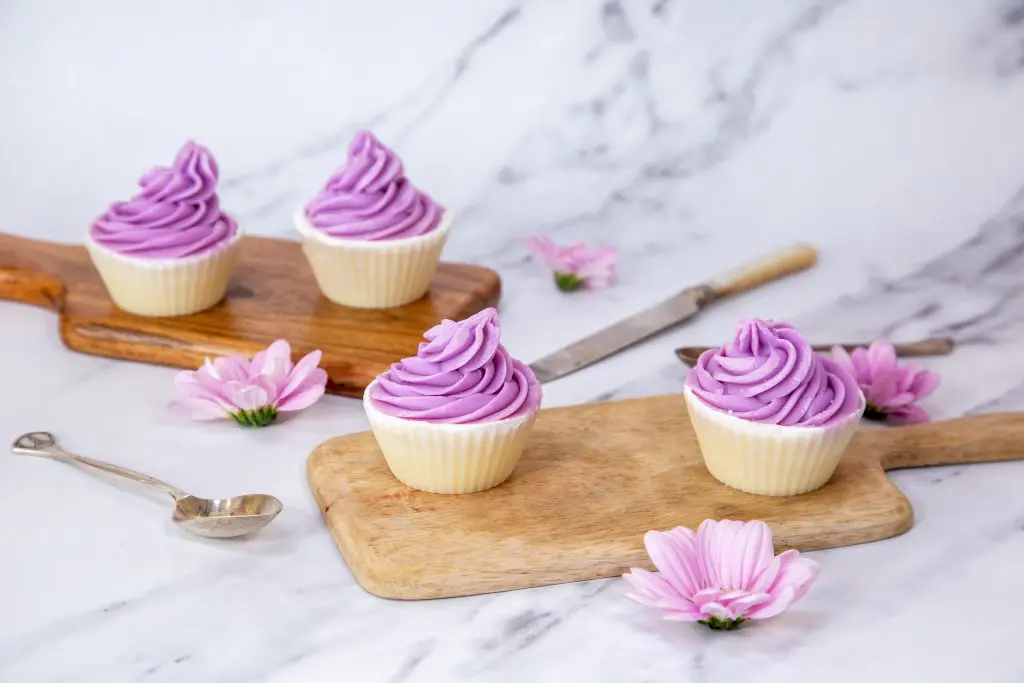
Cold process soap making
- Simple nourishing soap bars
- Palm-free soap bars
- Castile soap bars
- Exfoliating soap bars
- Colored soap bars
- African Black Soap-Inspired Soap bars
- Milk soap
- Honey soap
- Charcoal soap
- Beer soap
- Cupcake soaps
- Lace soap
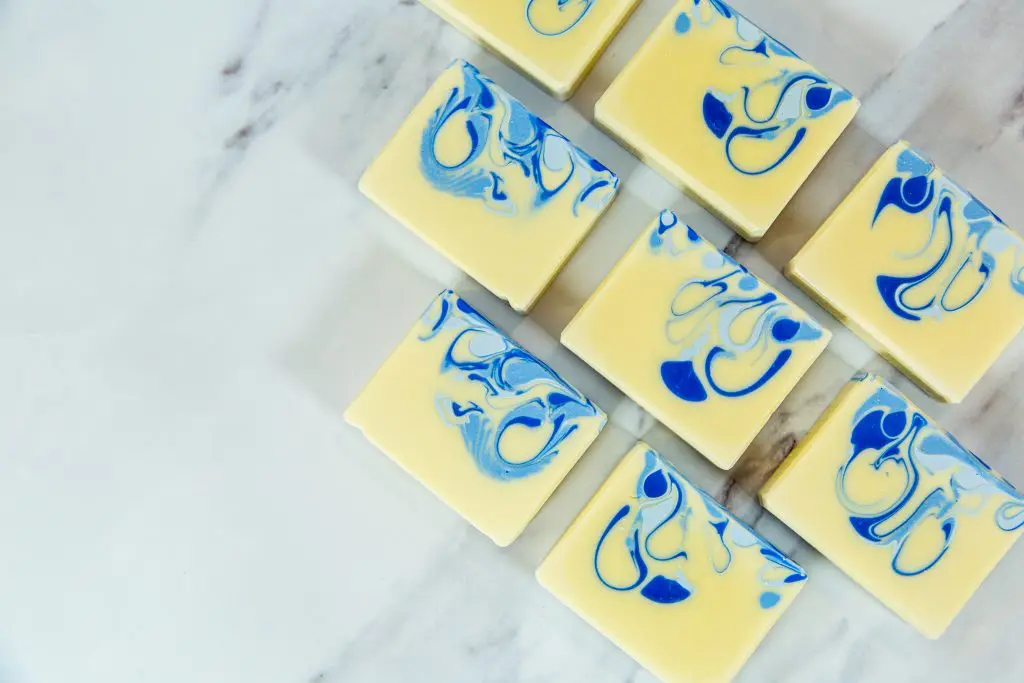
Soap swirling techniques
- Drop swirl
- In-the-pot (ITP) swirl
- Taiwan swirl
- Hanger swirl
- Secret swirl
- Column pour
- Pipe divider swirl
- Peacock swirl
- Simple swirl
- Mica swirl
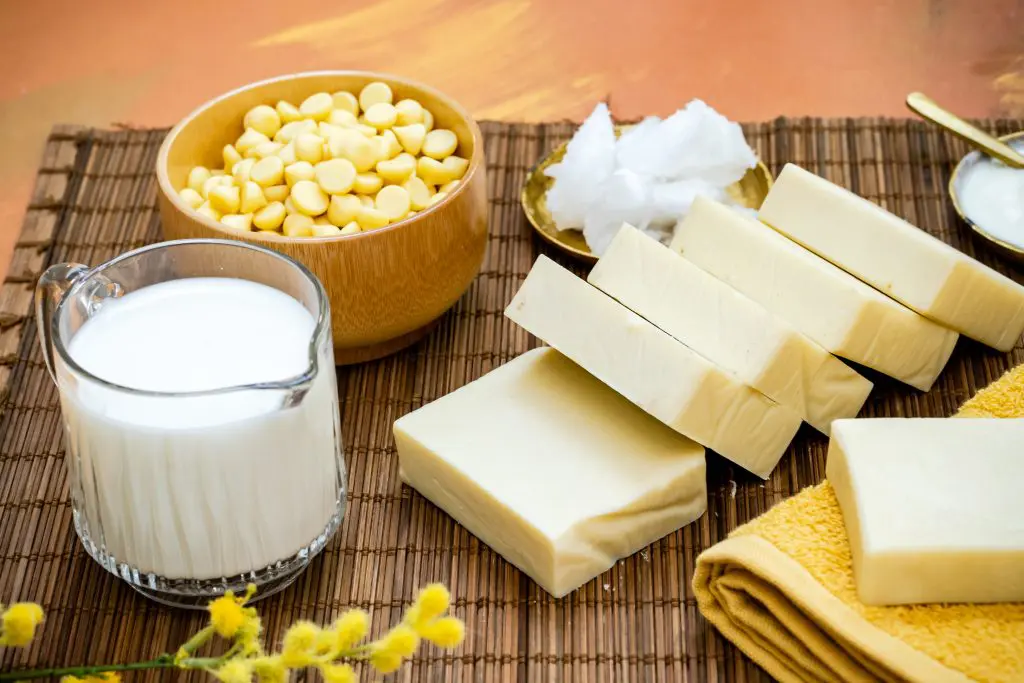
Hot process soap making
- Basic Nourishing
- Soap with Shea Butter
- Cocoa Butter Soap
- Oatmeal Honey Soap
- Milk and Yogurt Soap
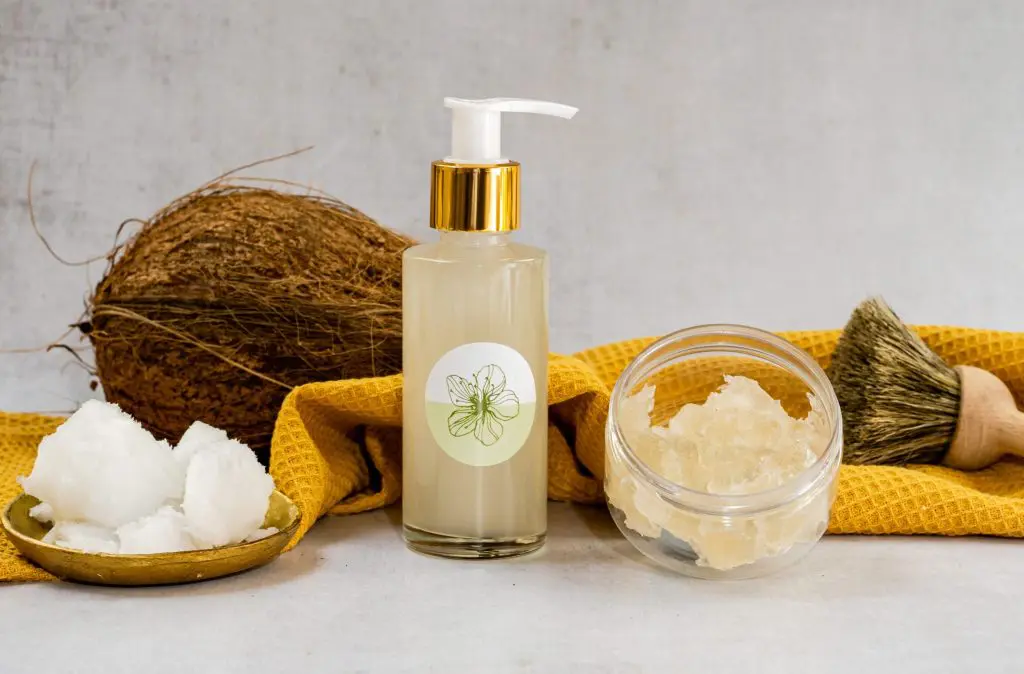
Liquid soap making
- Classic Olive Oil Castile Soap
- Duel-lye Olive Oil Castile Soap
- Universal Soap
- Household Cleaning Soap
Your journey on the Diploma in Soap Making
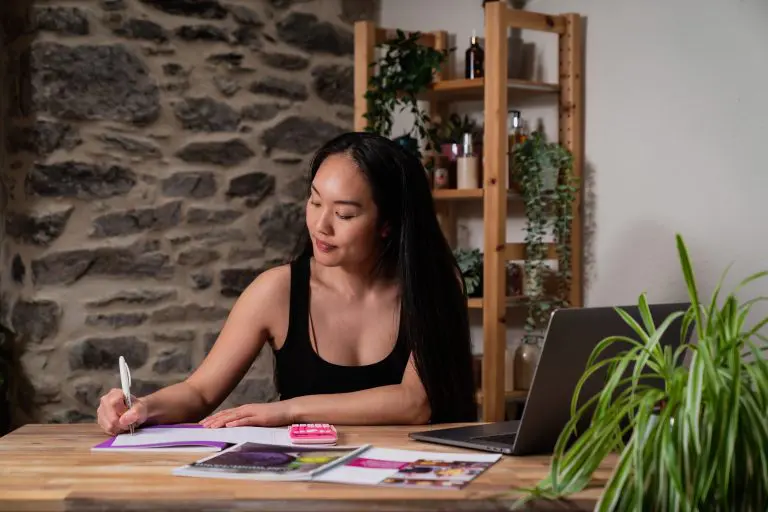
Theory
Discover the science and art of soap making
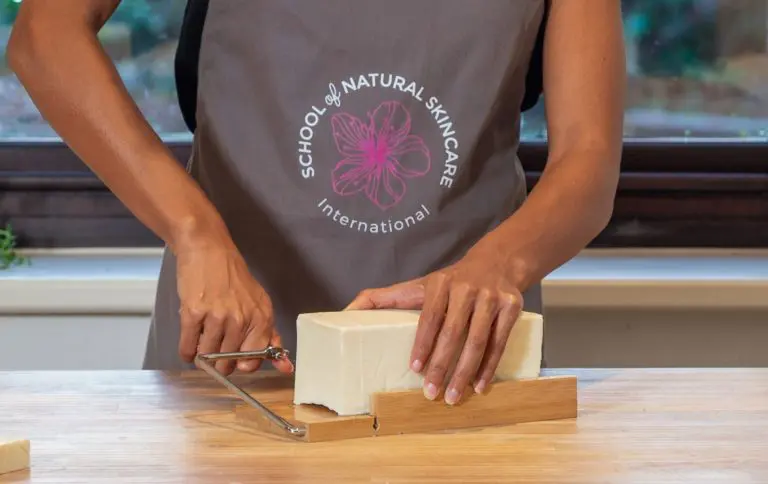
Cold process soap
Make successful soap bars following tried and tested recipes
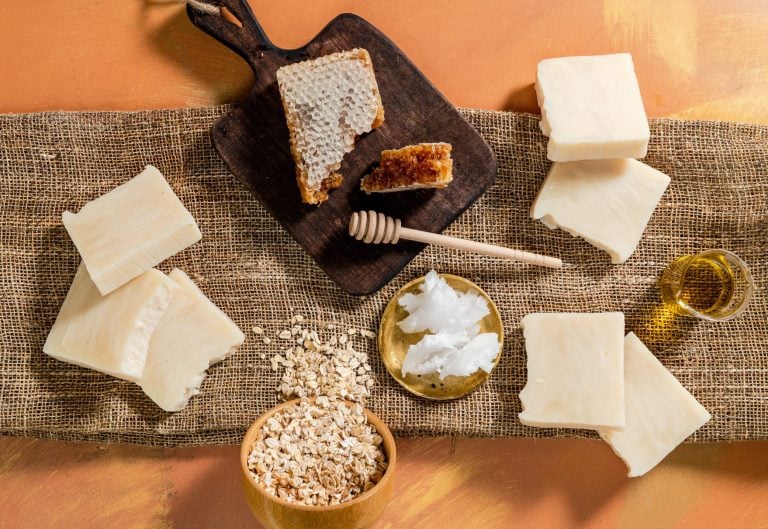
Special ingredients
Incorporate exfoliants, colorants, moisturizers, and more!
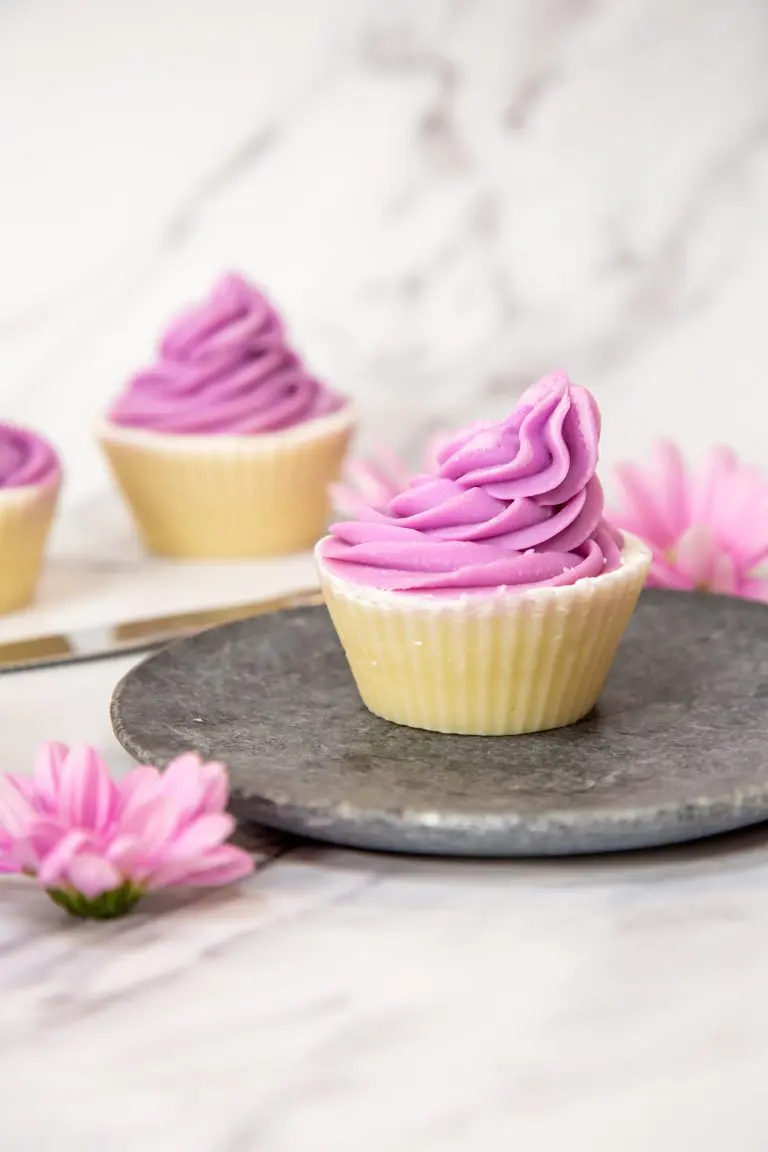
Techniques
Pipe and lace your soap for that extra touch of luxury
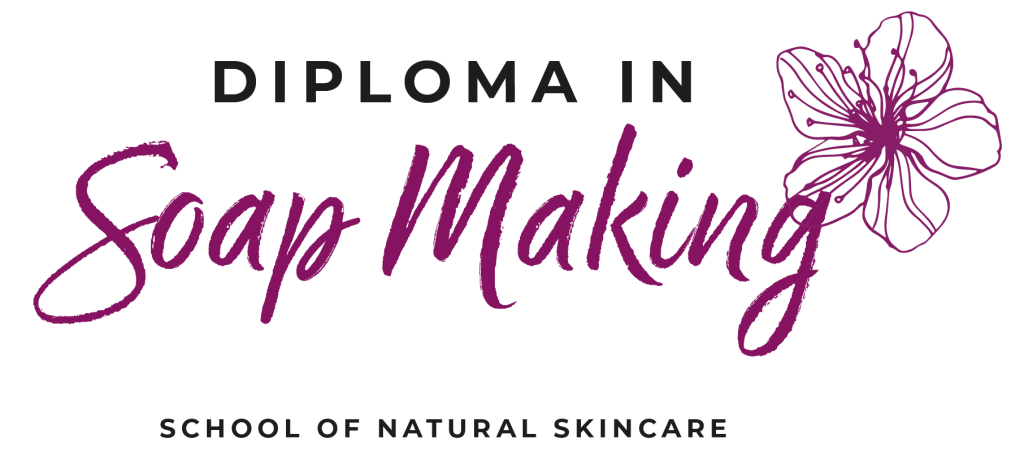
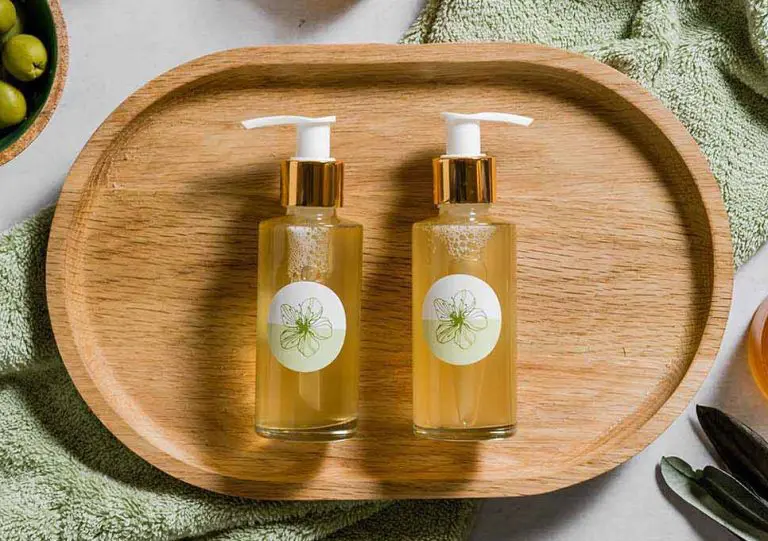
Liquid soap
Explore simple ingredients to create liquid soap, fast
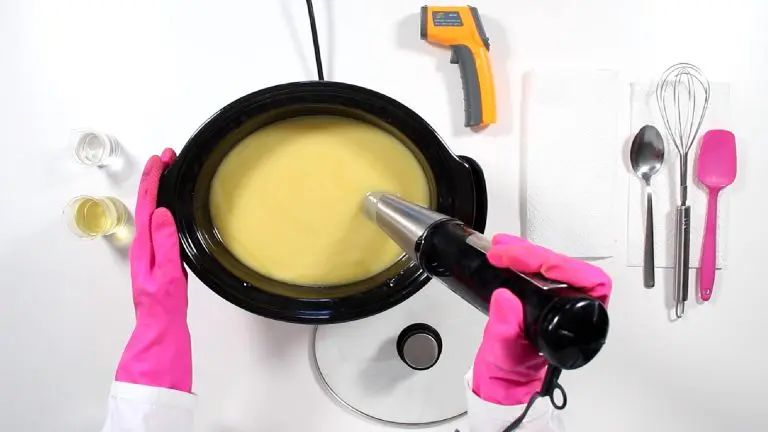
Hot process soap
Make nourishing zero waste soap using different techniques
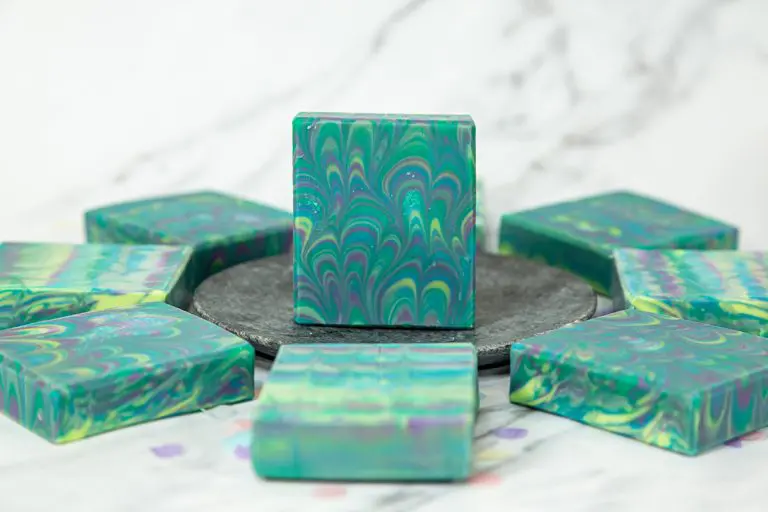
Swirl designs
Learn different soap swirl techniques and get artistic!
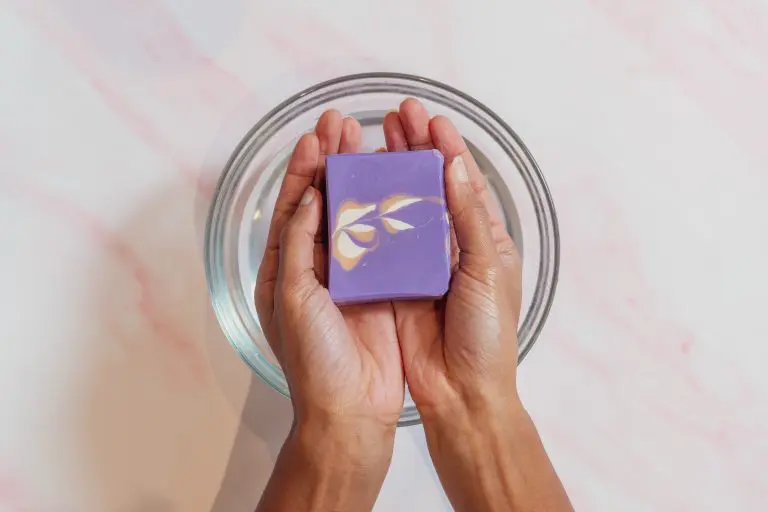
Formulate
Create your own soap recipes using a soap calculator

Theory
Discover the science and art of soap making

Cold process soap
Make successful soap bars following tried and tested recipes

Special ingredients
Incorporate exfoliants, colorants, moisturizers, and more!

Techniques
Pipe and lace your soap for that extra touch of luxury

Formulate
Create your own soap recipes using a soap calculator

Swirl designs
Learn different soap swirl techniques and get artistic!

Hot process soap
Make nourishing zero waste soap using different techniques

Liquid soap
Explore simple ingredients to create liquid soap, fast
Meet your instructors and tutors
Learn from and be supported by cosmetic scientists and professional formulators.
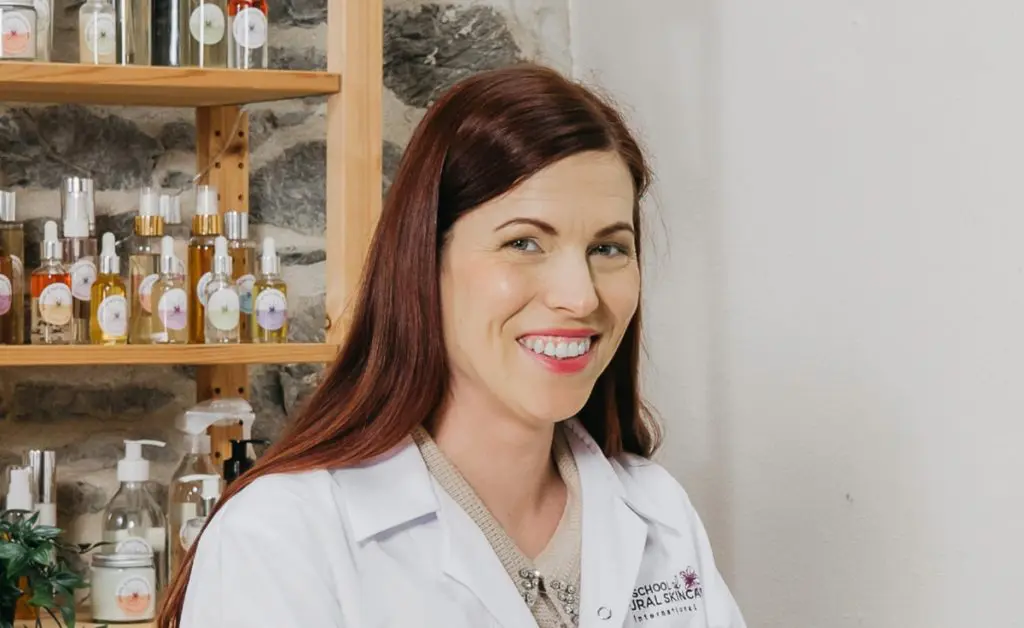
Tina Svetek
Tina is a cosmetic formulator, formulation consultant and safety assessor, who leads new product development for natural skincare and wellness brands.

Dr Nicole Voster
Nicole is a cosmetic formulation consultant and senior lecturer with extensive experience teaching chemistry and cosmetic formulation at South African universities and aiding brands in new product development.
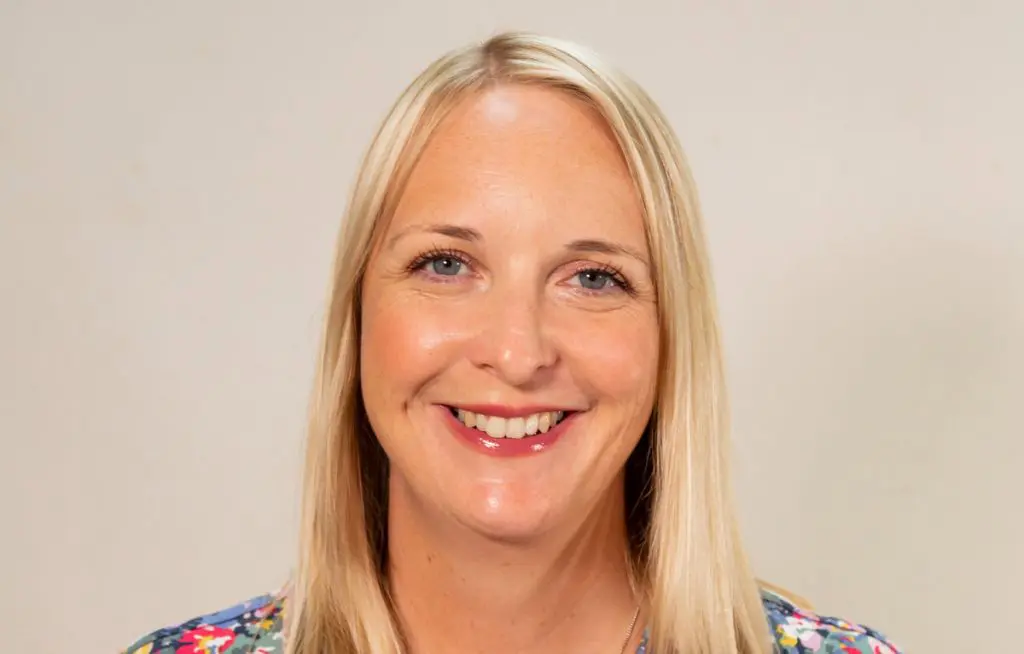
Gail Després
Gail is an award-winning entrepreneur and author of the A-Z of Natural Cosmetic Formulation. After creating her natural skincare brand, Gail moved into education, founding the School of Natural Skincare in 2010.

Gareth Després
Gareth qualified as a certified aromatherapist in 2010 and enriches the content of our online courses with his specialist knowledge of essential oils.
Is the Diploma in Soap Making right for me?
This course is perfect for…
Beginners
Passionate beginners
Go from beginner to expert with professional guidance.
Read more
Open to learning new skills, you are enthused about making soap and are ready to start at the basics and progress to advanced soap making all in one course.
Intermediate – advanced
Experiened soapers
Take your soap making skills to the next level and stand out from the crowd.
Read more
Formulate your own recipes, work with advanced ingredients, and master new, creative techniques like soap swirling, hot process and liquid soap making.
Entrepreneur
Beauty brand owners
Create beautiful, nourishing, and zero waste soaps to sell.
Read more
Soaps are the perfect low-cost addition to your existing natural and organic cosmetic range.
Student testimonials
Now, I feel confident and creative, thanks to the helpful recipes and videos.
- Lídia Ponsatí,
- Spain
I am a biologist with a love for natural products but before taking the course, I didn’t grasp how fatty acids worked in saponification or the importance of the SAP index. Now, I feel confident and creative, thanks to the helpful recipes and videos. I’m excited to explore more courses with you and to continue learning!
- Lídia Ponsatí,
- Spain
The instructors are extremely knowledgeable and teach at an excellent pace.
- Annette Ashby,
- USA
The information is detailed and extremely easy to follow and understand. The cost is extremely reasonable compared to other schools/online cosmetic formulation courses. Thank you School of Natural Skincare!
- Annette Ashby,
- USA
Why learn to formulate your own advanced soaps?
Make zero waste products. Soap bars don’t require any packaging, so they’re good for the environment.
Cost effective, time-efficient and preservative-free. Natural soap bars are inexpensive to make, don’t require any preservatives and last up to two years. This is an easy and affordable route to pursuing something you love or even fulfilling your dream of creating beautiful soaps to sell.
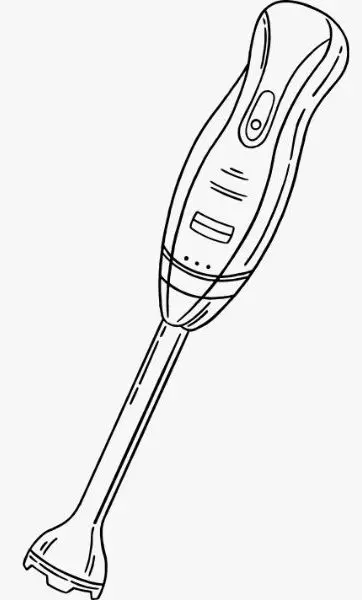
Prioritize your health and hygiene. Soap is the cornerstone of good hygiene that helps to boost health and wellness. Learn to create your own cold process soaps to a professional standard that are perfect for your skin.
Expand your product range. If you are already formulating natural skincare products, making your own soaps is the perfect way to take your formulation skills up a level and expand your product range. After all, we all use soap multiple times every day!
Want to try before you buy?
Sample a selection of our course material inside our online classroom.
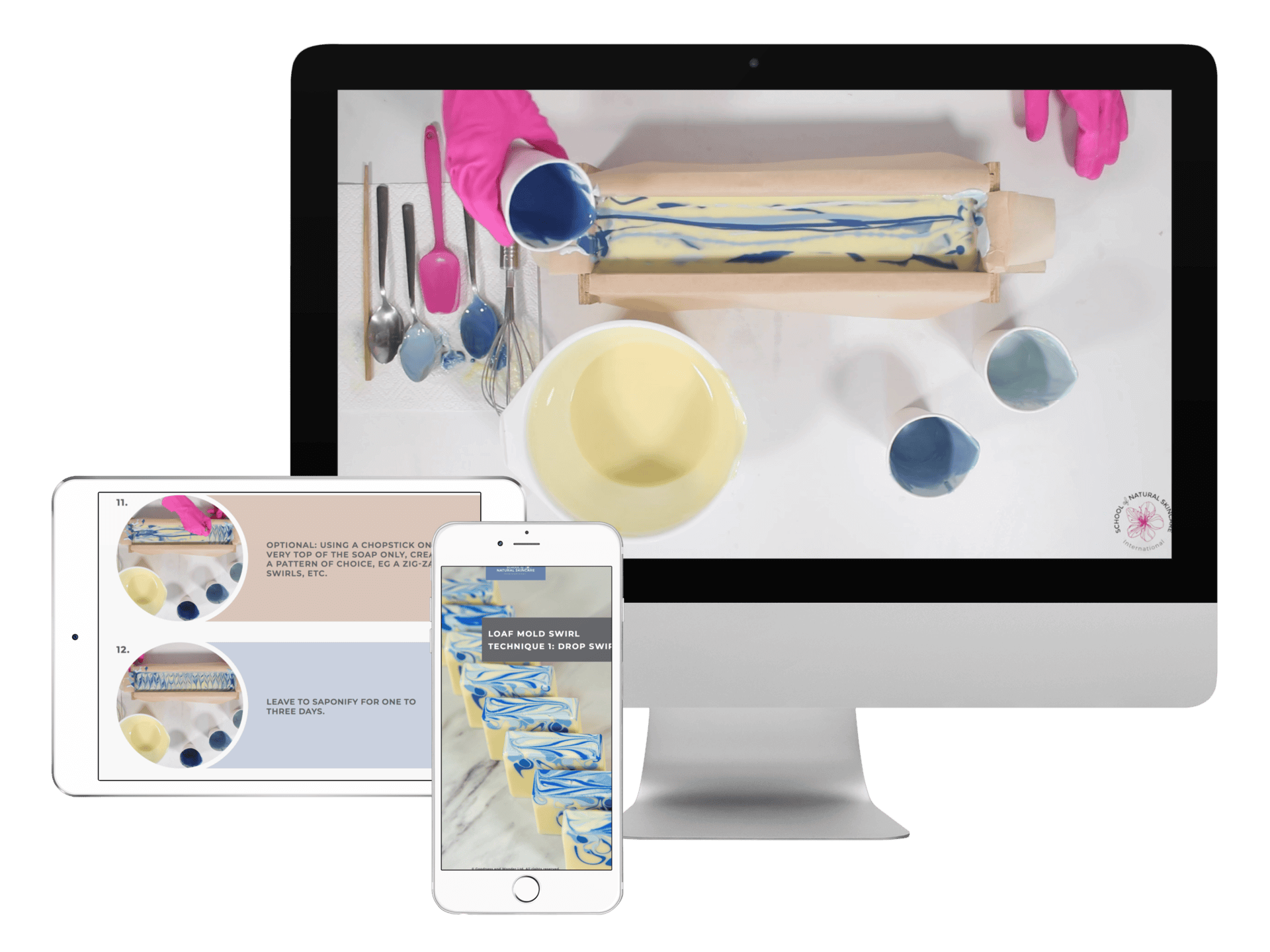
How does the Diploma in Soap Making work?
Our proven system for teaching formulation skills, developed over more than a decade of training provision, means when you study with us, you’ll gain the knowledge, skills, and support to succeed at formulating.
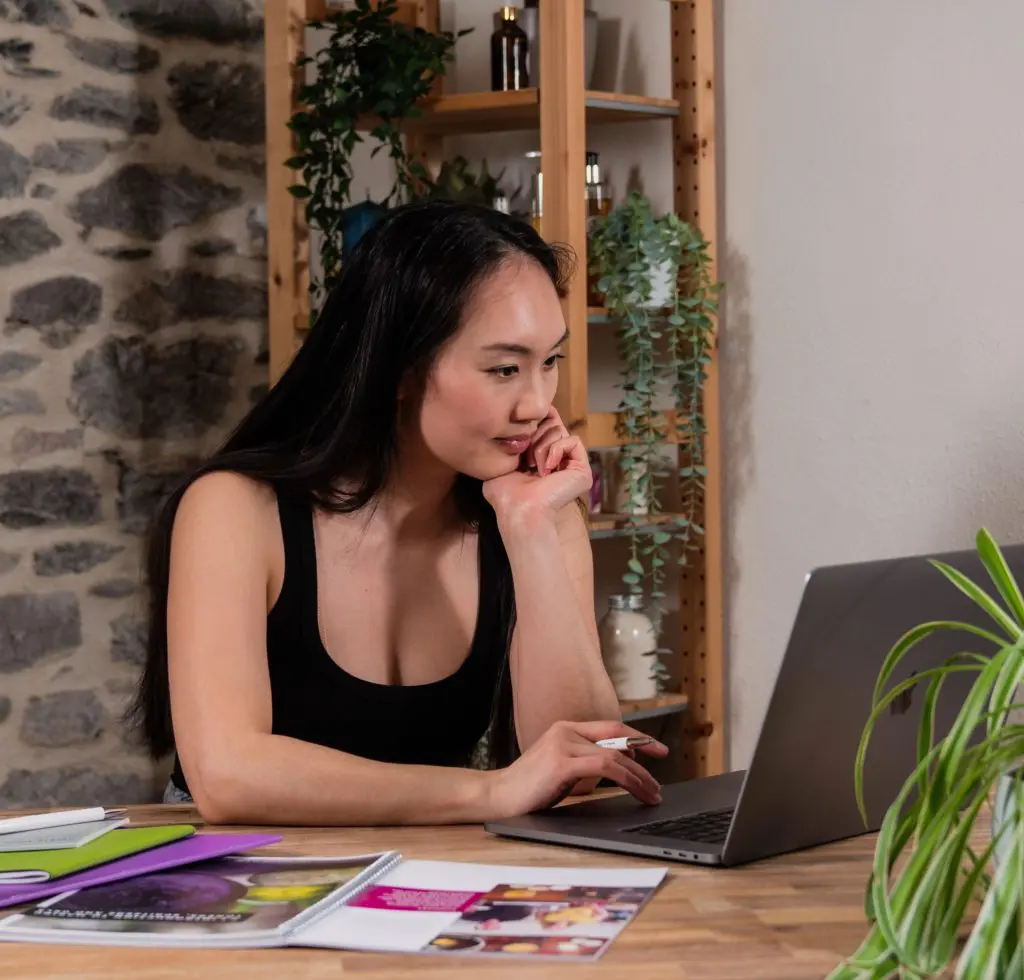
Knowledge
You don’t need a scientific background; our courses cover everything you need to know.
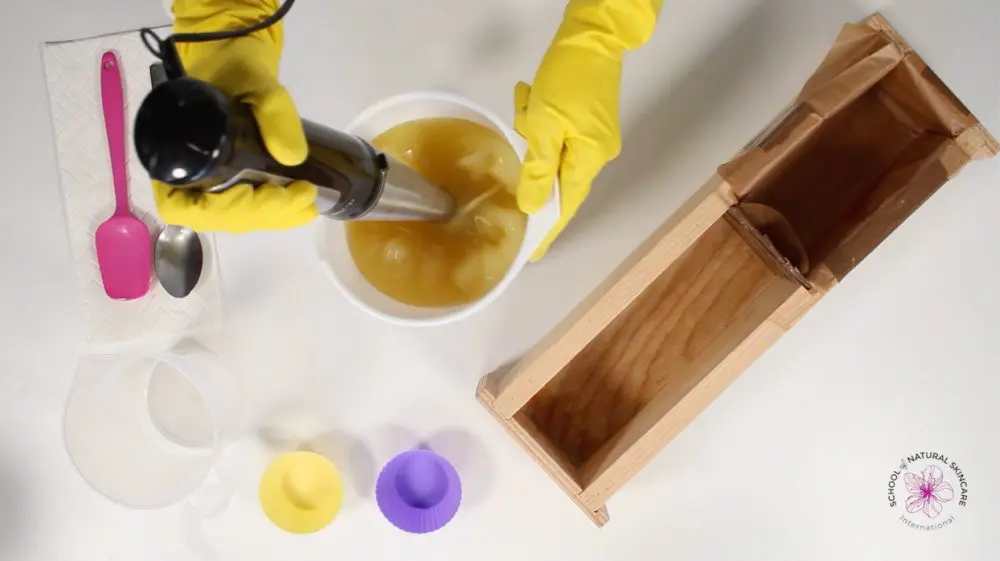
Skills
We start with more straightforward products and progress to the more complex or challenging ones so you can build your skills and confidence.
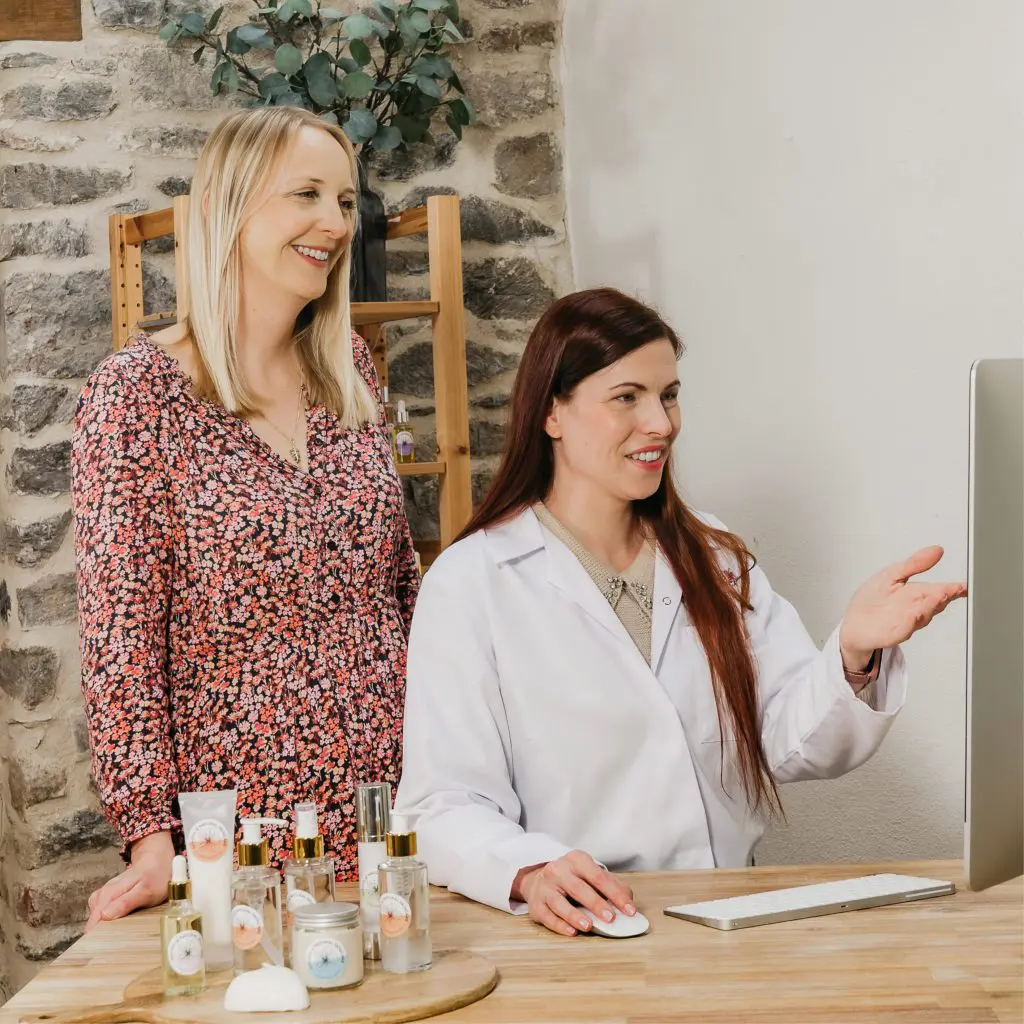
Support
You can rest assured that you are learning from qualified and experienced professionals and are not misled by inaccurate, poor-quality and unsafe information often found online.
We’ll teach you to formulate by providing the following resources for each type of product:
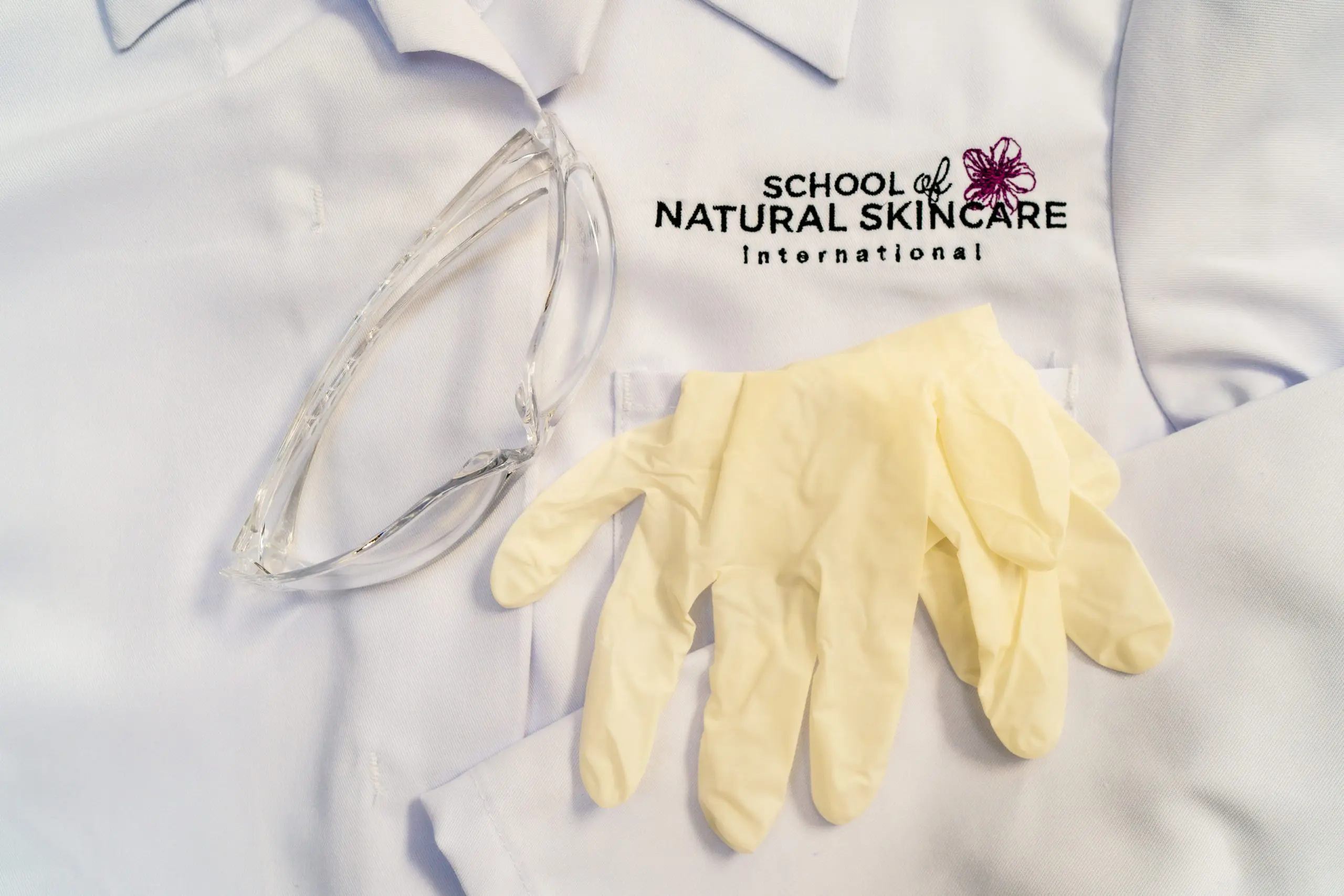
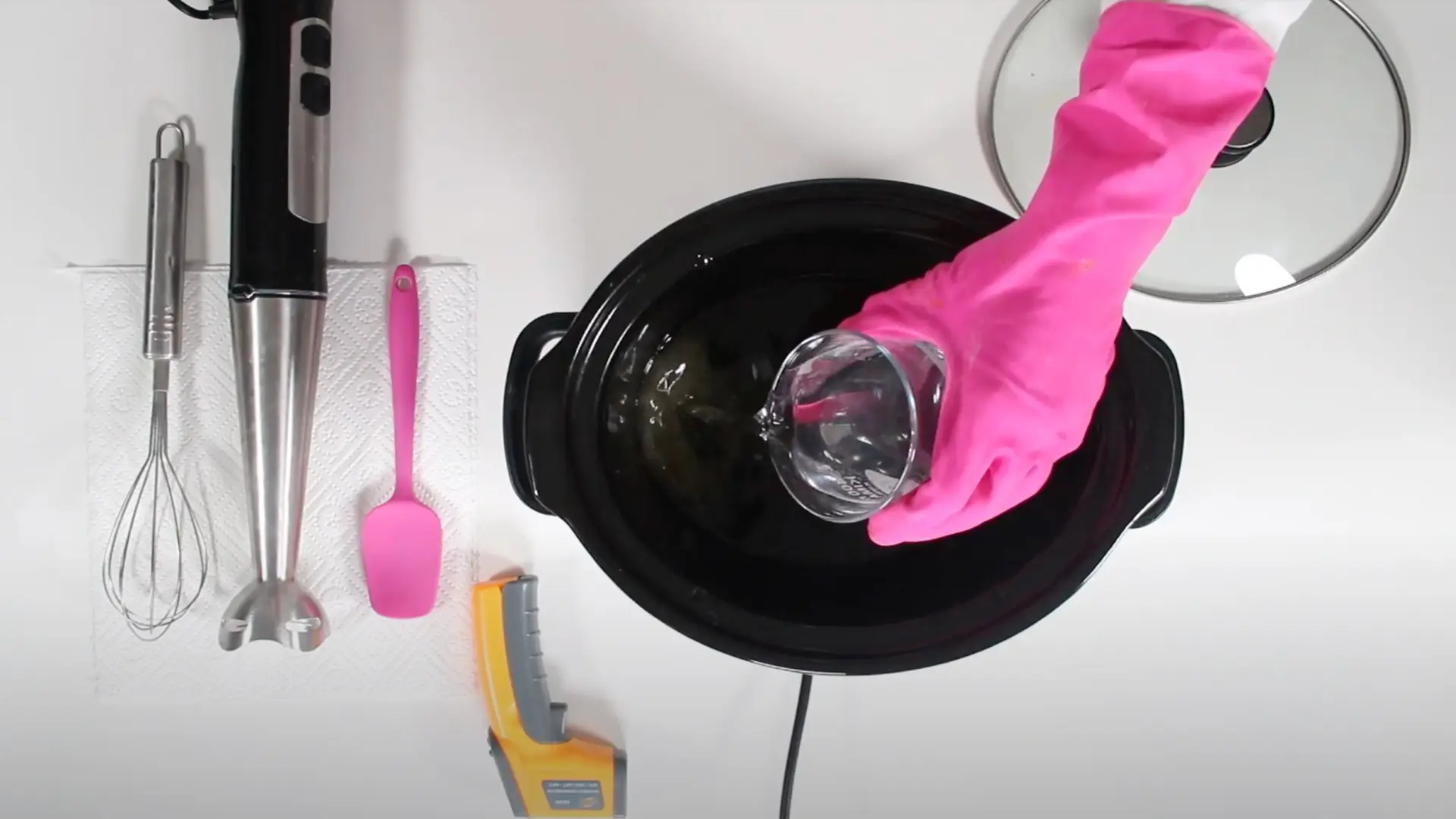
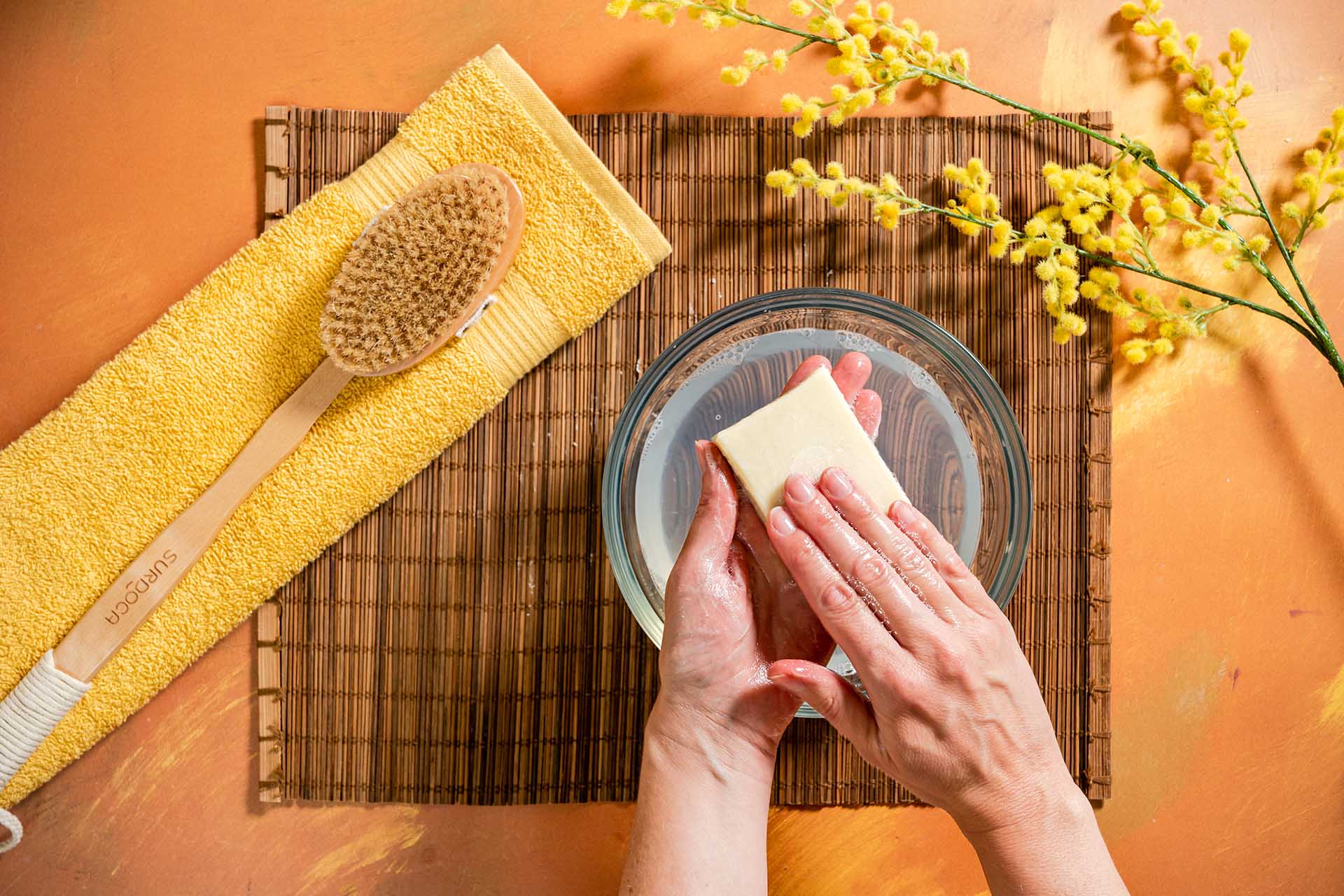
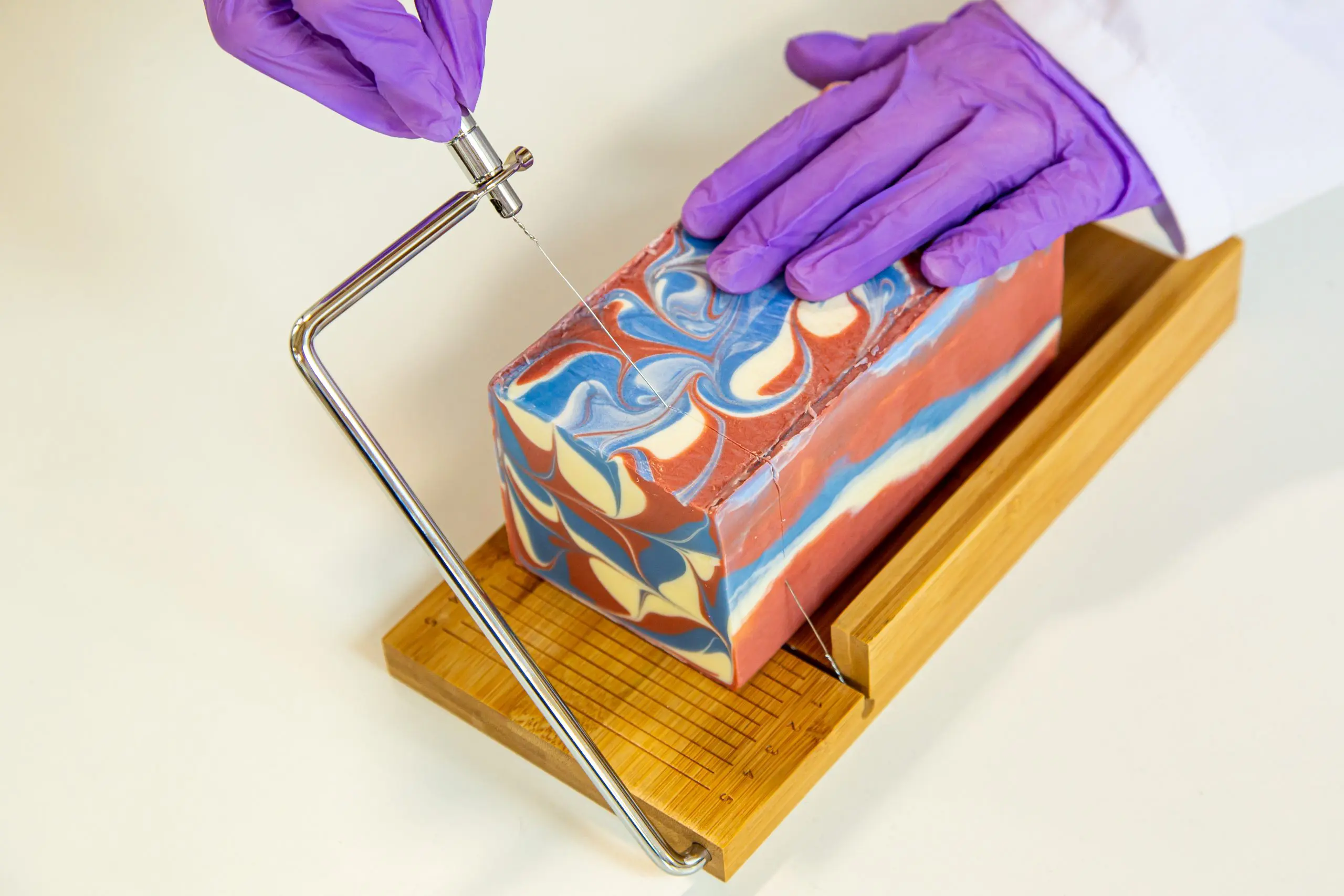
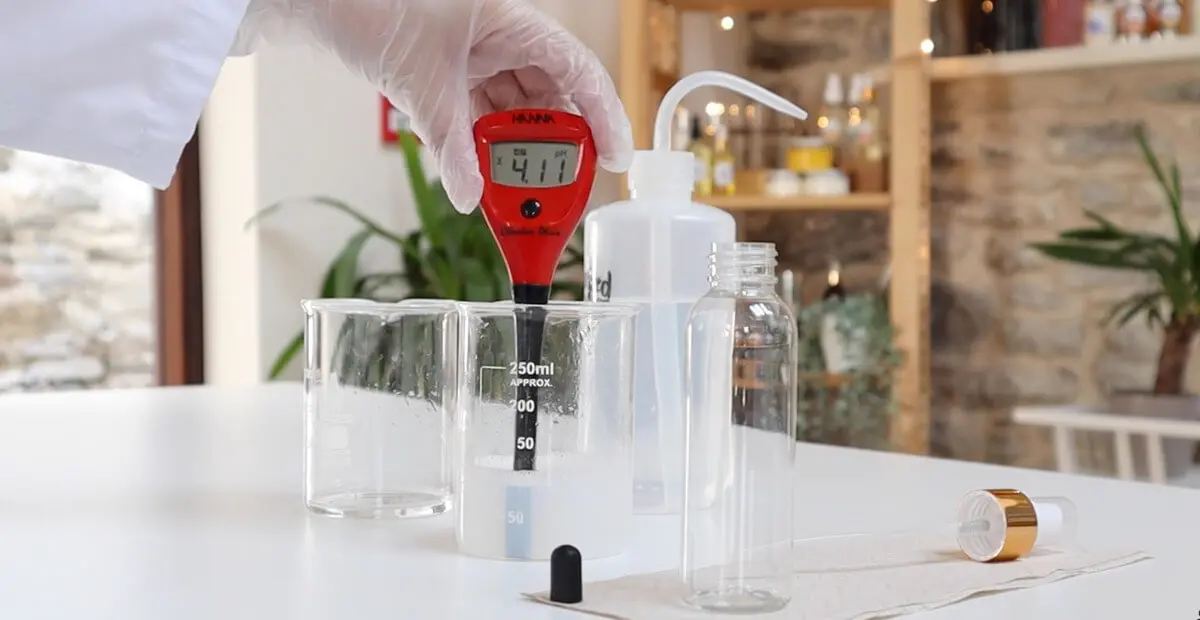
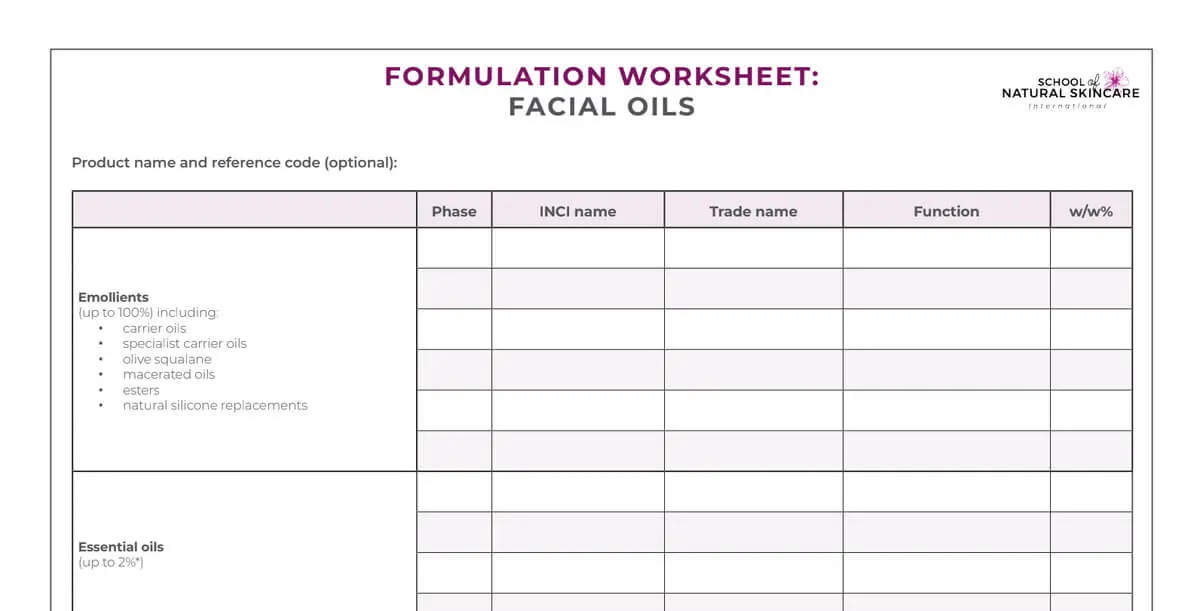
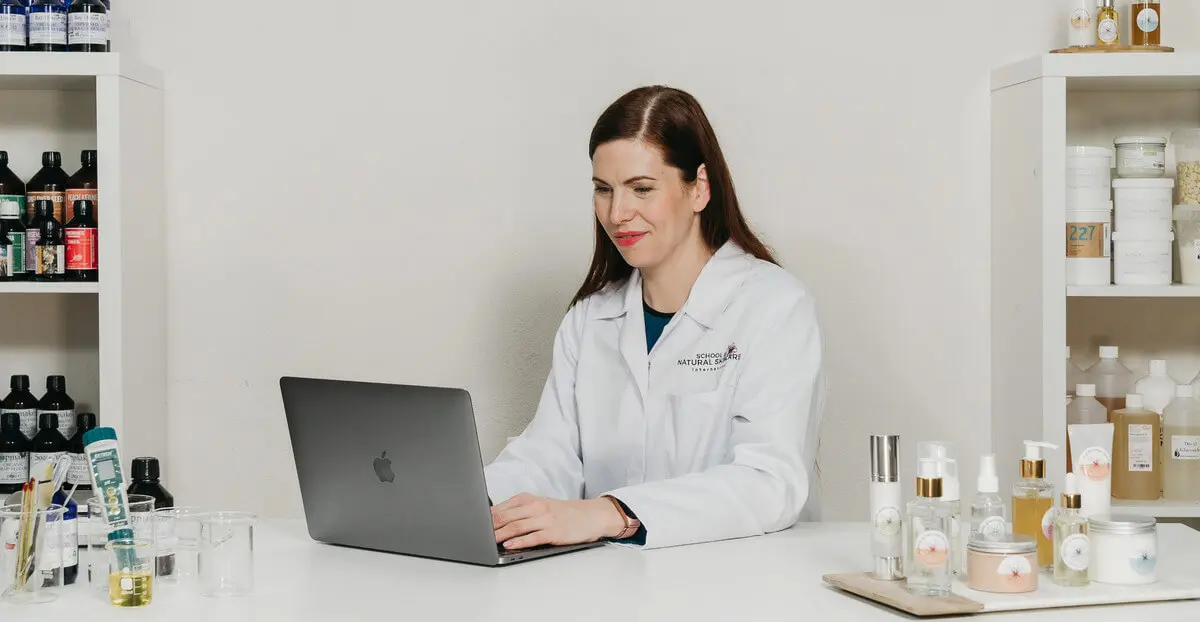
More than just a course our Diploma in Soap Making includes the support and community you need to truly thrive in your formulating journey
You’ll receive:
19 in-depth modules and four detailed textbooks with step-by-step instructions and beautiful photographs.
21 practical demonstration videos that show you exactly how to make a wide variety of soaps.
Guidance on formulating your own soap recipes.
Join our supportive, vibrant community of like-minded students and graduates across the world.
Easy-to-use online classroom, quizzes, and activities.
23 ready-to-use soap recipes to practice with.
Assignments marked personally and a course completion certificate.
Detailed ingredient, equipment and supplier information.
Be supported by cosmetic scientists
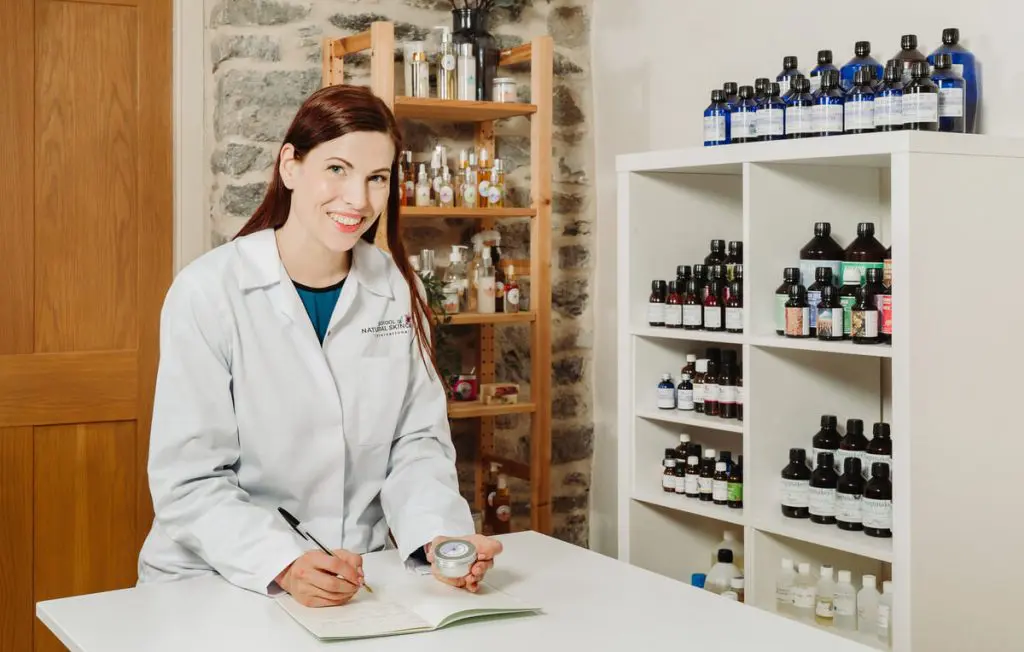
Get your questions answered
each week in our dedicated Tutor Q&A
Expand your understanding
with our monthly Formulators Forum, a LIVE learning and discussion session on Zoom
Have your end-of-course assignments personally marked
by our cosmetic scientists
Plus
Receive an invitation to join our private student and graduate online community.
Connect with like-minded formulators around the world inside our friendly student community. It’s the perfect place to discuss, support and inspire each other.
Student testimonials
It showed me how to confidently create healthy soaps safely.
- Leticia Lebron,
- USA
I had no experience at all but this course was so well put together and it showed me how to confidently create healthy soaps safely. I loved that this course included lots of great videos as I am more visual. I also enjoyed reading the course materials as it gave very important information. I am looking forward to more courses and classes with you!
- Leticia Lebron,
- USA
Enjoy learning anytime, anywhere
All our training is completed through our easy-to-use online classroom.
Study from anywhere in the world at your own pace.
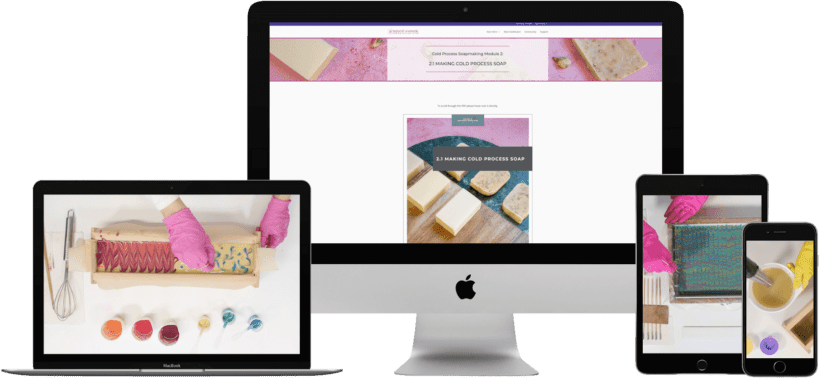
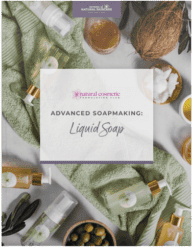
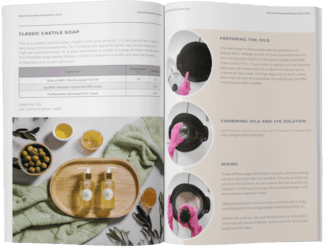
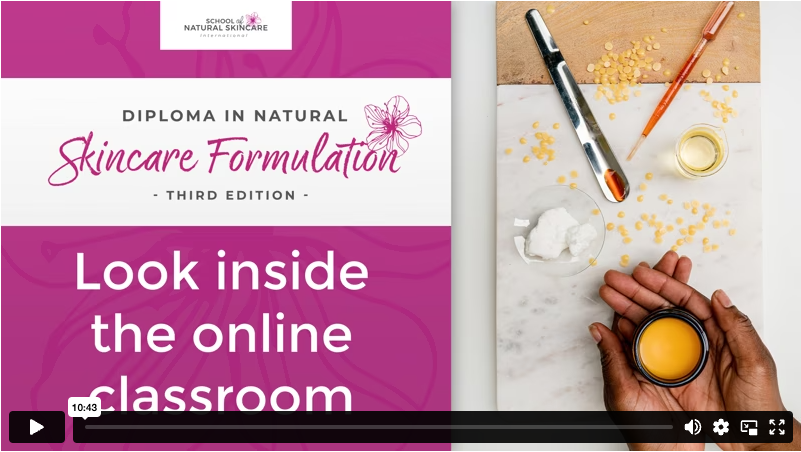
Why study with the
School of Natural Skincare?
Be part of our accredited, globally acclaimed, award-winning online formulation school that’s seen over 25,000+ students from 150 countries enjoy mastering the art, science, and creativity of making natural and organic skincare.
Learn from and be supported by professional cosmetic scientists.
Tried and tested formulations.
Formulate your way – natural, organic, vegan, sustainable – and customized to your skin type, tone and concerns.
Multi-award winning and accredited school, established in 2010.
Study with us for your own enjoyment and learning or to create a beauty brand.
Study at a pace that fits your lifestyle.
96% of our students would recommend a course to others.
Expand your product range, develop your formulation skills and learn to create gorgeous natural and organic soap!
Featured in






Where are our graduates now?
For many of our students, their ultimate goal when studying with us is to start their own beauty brand.
Here are some of our graduates who have gone on to become beauty entrepreneurs across the world. If this is what you aspire to, we can’t wait to see your story here one day soon.
From Cancer Survivor to Skincare Entrepreneur: Julie Sheridan’s Tale
Turning Passion into a Brand: How Busy Mom, Sanjanna Raju, Launched ‘Phases’ Skincare for Teens and Tweens
Lifelong Learning: Tatiana’s Path From Aromatherapy to Beauty Mastery and Launching her Brand
Lubna Melhem’s Journey: A Quest for Natural Skincare and Entrepreneurship
Denisse B García – the Naturally Nourishing Mama
Dare to be Natural; Going One Step Further in Natural Haircare Inspiration
The Diploma in Soap Making in detail
What you'll achieve:
Understand the essential theory of soap making and be able to create nourishing soap bars safely following our recipes.
Formulate your own soap bars by choosing appropriate carrier oils and using a soap calculator correctly.
Work with a wide range of advanced ingredients to add interest and extra benefits to your soap bars – milk, yogurt, beer, honey, sugar, salt, botanicals, clay, charcoal and more!
Carry out 10 soap swirling techniques to design beautiful soap patterns.
Use advanced soap making techniques with ease, including creating nourishing hot-processed soap with superfat, and liquid soap.
Create soap bars to sell. Be confident and empowered with your new knowledge and skills, and create soap to sell if you wish.
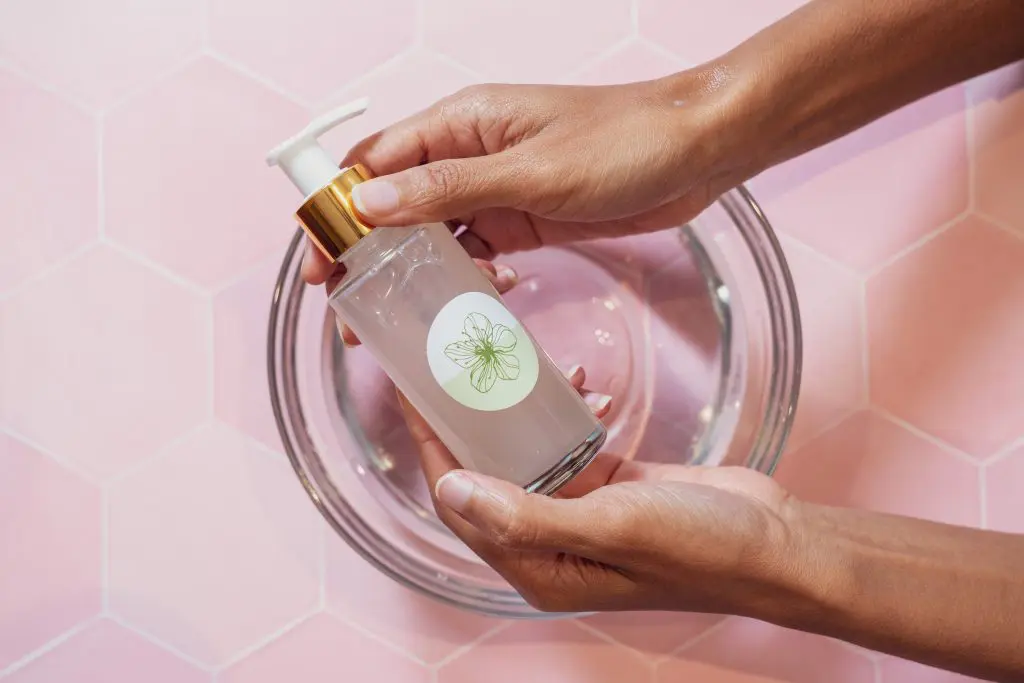
What you need to know:
Level
Beginner, intermediate and advanced.
Schedule
Self-paced course with on demand lessons. Study at a time that suits you. Optional live sessions.
Study time
Approximately 70-120 hours, including hands-on soap making time. Most students complete the course within six to 18 months.
Course access
18 months. This can be extended for a small fee.
Prerequisites
None. You’ll need the internet and a computer or tablet to access our online classroom.
When can I start?
Enrollment is open all year round, and you can begin the course as soon as you’re ready.
What you’ll study:
Part 1: Cold Process Soap Making
Begin your soap making journey with cold process soap bars. Learn the essential soap making theory and make your first bars of soap by following our recipes and video tutorials. Then move on to adding advanced ingredients like colors, exfoliants, clay, milk and honey to your soap, create your own soap recipes and make cupcake soaps.
Modules 1 to 4
Module 1: Soap Making Theory
Learn the fundamentals of cold process soapmaking to set you up for success.
Read more
What you will learn:
- Soapmaking ingredients, equipment and protective clothing.
- The process of saponification.
- The properties that different carrier oils and butters give to soap and their saponification values.
- Creating recipes with ‘superfat’ to make nourishing and gentle soap bars.
- How to adjust the hardness, detergency and foaming ability of your soap bars.
- Factors affecting the speed of saponification.
- Calculating the amount of lye required.
- How to use a soap calculator to formulate your own soap.
- Important safety considerations.
Module 2: Making Soap
Discover the soapmaking process in detail and follow one of our tried and tested recipes to make a perfect bar of soap – the first time.
Read more
What you will learn:
- Preparing your soap mold and equipment.
- Preparing the lye solution.
- Mixing oils and lye solution to form an emulsion.
- Reaching trace.
- Pouring into your molds.
- The saponification process.
- Unmolding and cutting the soap.
- Curing your soap bars.
Receive four of our best beginner’s soap recipes so you can make a successful batch of soap on your first attempt: Balanced Beginner’s Soap, Pure Coconut Soap, Simple Castile Soap and Palm Oil-free Soap.
Module 3: Advanced Soap Recipes
Make more advanced soap recipes that include exfoliating particles, detoxifying ingredients, colorants and essential oils plus learn how to troubleshoot common issues.
Read more
What you will learn:
- How to create exfoliating soaps using exfoliants such as poppy seeds and cornmeal.
- How to add clay and activated charcoal to your soaps for color and detoxifying properties.
- Decorating soaps with petals.
- Two methods for creating soap similar to African Black Soap.
- How to troubleshoot ten common issues including soap that is crumbly, soft, cracked, curdled or has white ash on the surface.
Receive advanced soap recipes including Exfoliating Gardener’s Soap, Charcoal Purifying Soap, Rose Clay Soap and African Black Soap-Inspired Soap
Module 4: Advanced Soap Making Techniques
Create soap with advanced ingredients such as milk, sugar, honey and beer and try some new decorative techniques including piping soap to create cupcake soaps.
Read more
What you will learn:
- How to incorporate advanced ingredients including animal milk, plant-derived milk, sugar, honey, salt and beer into your soaps.
- The properties advanced ingredients bring to your soap including nourishing, lather enhancing and hydrating.
- A wide range of options for coloring soap including synthetic dyes, mineral pigments, colored micas and botanical colorants.
- A piping soap technique used to make soaps that look like cupcakes or to decorate the top of a soap loaf.
- How to create intricate lace patterns on the surface of your soap.
Receive advanced soap recipes for Nourishing Milk Soap, Gentle Honey Soap, Pink Exfoliating Salt Bar And Simple Beer Soap and Piped Soap.
Module 1: Soap Making Theory
Learn the fundamentals of cold process soapmaking to set you up for success.
Read more
What you will learn:
- Soapmaking ingredients, equipment and protective clothing.
- The process of saponification.
- The properties that different carrier oils and butters give to soap and their saponification values.
- Creating recipes with ‘superfat’ to make nourishing and gentle soap bars.
- How to adjust the hardness, detergency and foaming ability of your soap bars.
- Factors affecting the speed of saponification.
- Calculating the amount of lye required.
- How to use a soap calculator to formulate your own soap.
- Important safety considerations.
Module 2: Making Soap
Discover the soapmaking process in detail and follow one of our tried and tested recipes to make a perfect bar of soap – the first time.
Read more
What you will learn:
- Preparing your soap mold and equipment.
- Preparing the lye solution.
- Mixing oils and lye solution to form an emulsion.
- Reaching trace.
- Pouring into your molds.
- The saponification process.
- Unmolding and cutting the soap.
- Curing your soap bars.
Receive four of our best beginner’s soap recipes so you can make a successful batch of soap on your first attempt: Balanced Beginner’s Soap, Pure Coconut Soap, Simple Castile Soap and Palm Oil-free Soap.
Module 3: Advanced Soap Recipes
Make more advanced soap recipes that include exfoliating particles, detoxifying ingredients, colorants and essential oils plus learn how to troubleshoot common issues.
Read more
What you will learn:
- How to create exfoliating soaps using exfoliants such as poppy seeds and cornmeal.
- How to add clay and activated charcoal to your soaps for color and detoxifying properties.
- Decorating soaps with petals.
- Two methods for creating soap similar to African Black Soap.
- How to troubleshoot ten common issues including soap that is crumbly, soft, cracked, curdled or has white ash on the surface.
Receive advanced soap recipes including Exfoliating Gardener’s Soap, Charcoal Purifying Soap, Rose Clay Soap and African Black Soap-Inspired Soap
View all modules
Module 4: Advanced Soap Making Techniques
Create soap with advanced ingredients such as milk, sugar, honey and beer and try some new decorative techniques including piping soap to create cupcake soaps.
Read more
What you will learn:
- How to incorporate advanced ingredients including animal milk, plant-derived milk, sugar, honey, salt and beer into your soaps.
- The properties advanced ingredients bring to your soap including nourishing, lather enhancing and hydrating.
- A wide range of options for coloring soap including synthetic dyes, mineral pigments, colored micas and botanical colorants.
- A piping soap technique used to make soaps that look like cupcakes or to decorate the top of a soap loaf.
- How to create intricate lace patterns on the surface of your soap.
Receive advanced soap recipes for Nourishing Milk Soap, Gentle Honey Soap, Pink Exfoliating Salt Bar And Simple Beer Soap and Piped Soap.
Part 2: Soap Swirling Techniques
Soap swirling techniques will allow you to take your cold process soap making skills to the next level and create beautiful designs that are a work of art. Learn 10 techniques to create 10 different soap designs. For a look at the designs you will learn to create, head over to our blog Cold Process Soap Designs: 10 Soap Swirl Techniques to Try.
Modules 5 to 9
Module 5: Starting Advanced Soap Making
Gather the equipment you need for soap swirling and discover a ‘slow moving’ soap recipe perfect for creating advanced swirls.
Read more
What you will learn:
- Important tips to help you succeed at soap swirling.
- Equipment for making swirls – it’s easy and inexpensive to obtain, and you may already have some of it at home.
Module 6: Loaf Mold Swirl Techniques
Practice two easy and beautiful techniques used when making soap in a loaf mold: the drop swirl and in-the-pot swirl.
Read more
What you will learn:
- Drop swirl technique where your soap mixture is divided into differently colored parts and poured into a loaf mold, in smaller portions, rotating the colors.
- In-the-pot swirl technique where soap mixtures of different colors are mixed ‘in the pot’ as opposed to in the mold, creating a lovely effect.
Module 7: Advanced Loaf Mold Swirl Techniques
Build on your skills by learning the Taiwan swirl and hanger swirl techniques, which are a little more advanced. Marvel at the stunning soap you create and then master the challenging secret swirl.
Read more
What you will learn:
- Taiwan swirl technique where a rod is used in a specific way to create a swirl pattern.
- Hanger swirl technique where a wire is used to create many different results, including a zig-zag design or round swirl pattern.
- Secret swirl technique where the swirling result is not visible until the soap is cut into bars.
Module 8: Slab Mold Swirl Techniques
Discover three swirl techniques that are made in a slab mold rather than a loaf mold. The column pour and pipe divider swirl techniques are easy to achieve and create beautiful results. The peacock swirl takes more time, but the end result is worth the effort.
Read more
What you will learn:
- Column pour technique where beautiful patterns that start as concentric circles are then manipulated to form looping swirls.
- Pipe divider swirl that utilizes PVC pipes (like the ones used in plumbing) and soap dyed in different colors.
- Peacock swirl where a tool called a ‘soaping comb’ is used to create many parallel lines that are then manipulated to create a peacock feather effect.
Module 9: Decorating the Top of the Soap
Learn simple techniques to decorate the top of a soap loaf. Use leftover colored soap to create a simple swirl or shimmery mica to create a gorgeous mica swirl.
Read more
What you will learn:
- Simple swirl technique where a rod or chopstick is used to create swirls just at the very top of the soap.
- Mica swirl technique where mica is used to decorate the top of a soap, giving a lovely shimmery result.

Module 5: Starting Advanced Soap Making
Gather the equipment you need for soap swirling and discover a ‘slow moving’ soap recipe perfect for creating advanced swirls.
Read more
What you will learn:
- Important tips to help you succeed at soap swirling.
- Equipment for making swirls – it’s easy and inexpensive to obtain, and you may already have some of it at home.
Module 6: Loaf Mold Swirl Techniques
Practice two easy and beautiful techniques used when making soap in a loaf mold: the drop swirl and in-the-pot swirl.
Read more
What you will learn:
- Drop swirl technique where your soap mixture is divided into differently colored parts and poured into a loaf mold, in smaller portions, rotating the colors.
- In-the-pot swirl technique where soap mixtures of different colors are mixed ‘in the pot’ as opposed to in the mold, creating a lovely effect.
Module 7: Advanced Loaf Mold Swirl Techniques
Build on your skills by learning the Taiwan swirl and hanger swirl techniques, which are a little more advanced. Marvel at the stunning soap you create and then master the challenging secret swirl.
Read more
What you will learn:
- Taiwan swirl technique where a rod is used in a specific way to create a swirl pattern.
- Hanger swirl technique where a wire is used to create many different results, including a zig-zag design or round swirl pattern.
- Secret swirl technique where the swirling result is not visible until the soap is cut into bars.
Module 8: Slab Mold Swirl Techniques
Discover three swirl techniques that are made in a slab mold rather than a loaf mold. The column pour and pipe divider swirl techniques are easy to achieve and create beautiful results. The peacock swirl takes more time, but the end result is worth the effort.
Read more
What you will learn:
- Column pour technique where beautiful patterns that start as concentric circles are then manipulated to form looping swirls.
- Pipe divider swirl that utilizes PVC pipes (like the ones used in plumbing) and soap dyed in different colors.
- Peacock swirl where a tool called a ‘soaping comb’ is used to create many parallel lines that are then manipulated to create a peacock feather effect.
Module 9: Decorating the Top of the Soap
Learn simple techniques to decorate the top of a soap loaf. Use leftover colored soap to create a simple swirl or shimmery mica to create a gorgeous mica swirl.
Read more
What you will learn:
- Simple swirl technique where a rod or chopstick is used to create swirls just at the very top of the soap.
- Mica swirl technique where mica is used to decorate the top of a soap, giving a lovely shimmery result.

Part 3: Hot Process Soap Making
Hot process soap is made at higher temperatures than cold process (usually 50-100°C) and a slow cooker (or crock pot) is used to ‘cook’ the oil mixture while it saponifies. In hot process soap you can control the post-cook superfat, which means you can make very nourishing soaps. The soap making process can be very quick, even 30 minutes from start to finish, depending on the temperature you are working with.
Modules 10 to 13
Module 10: Introduction to Hot Process (HP) Soap Making
Learn about the benefits of hot process soap making and the differences between hot and cold process soap making.
Read more
What you will learn:
- Benefits of hot process soap making.
- Differences between hot and cold process soap making.
- Mandatory safety information.
- Soap making terminology.
- How to calculate the ‘post-cook superfat’ in your recipe. This is ‘extra fat’ (for example oils or butter) that is added after saponification so it does not react with the lye and turn into soap but instead it adds extra nourishing properties to the soap.
- How to calculate the amount of water in your recipe (which uses a different method than in cold process soap making).
Module 11: Making Hot Process Soap
Hot process soap can be made at either low or high temperatures. We’ll compare the two methods and you’ll learn all the steps required including how long to mix the soap, how long to leave it to ‘cook’, and how you’ll know when it’s ready.
Read more
What you will learn:
- Low temperature vs high temperature hot process soap making.
- Hot process soap making overview.
- The soap making process: hot process soap (low temperature).
- The soap making process: hot process soap (high temperature).
Our video tutorials and step-by-step instructions with photos will show you exactly how to create hot process soap both at low temperatures and high temperatures.
Module 12: Variations on the Hot Process Soap Making Method
Module 13: Hot Process Soap Recipes
Read more
What you will learn:
- Basic Nourishing Soap with Shea Butter.
- Cocoa Butter Soap.
- Oatmeal Honey Soap.
- Milk and Yogurt Soap.
Module 10: Introduction to Hot Process (HP) Soap Making
Learn about the benefits of hot process soap making and the differences between hot and cold process soap making.
Read more
What you will learn:
- Benefits of hot process soap making.
- Differences between hot and cold process soap making.
- Mandatory safety information.
- Soap making terminology.
- How to calculate the ‘post-cook superfat’ in your recipe. This is ‘extra fat’ (for example oils or butter) that is added after saponification so it does not react with the lye and turn into soap but instead it adds extra nourishing properties to the soap.
- How to calculate the amount of water in your recipe (which uses a different method than in cold process soap making).
Module 11: Making Hot Process Soap
Hot process soap can be made at either low or high temperatures. We’ll compare the two methods and you’ll learn all the steps required including how long to mix the soap, how long to leave it to ‘cook’, and how you’ll know when it’s ready.
Read more
What you will learn:
- Low temperature vs high temperature hot process soap making.
- Hot process soap making overview.
- The soap making process: hot process soap (low temperature).
- The soap making process: hot process soap (high temperature).
Our video tutorials and step-by-step instructions with photos will show you exactly how to create hot process soap both at low temperatures and high temperatures.
Module 12: Variations on the Hot Process Soap Making Method
Module 13: Hot Process Soap Recipes
Read more
What you will learn:
- Basic Nourishing Soap with Shea Butter.
- Cocoa Butter Soap.
- Oatmeal Honey Soap.
- Milk and Yogurt Soap.
Part 4: Liquid Soap Making
Modules 14 to 19
Module 14: Introduction to Liquid Soap Making
Explore the differences between liquid soap and surfactant-based ‘soap’, and also the differences between making soap bars and liquid soap. This is essential to understand before proceeding with liquid soap making.
Module 15: Working With Potassium Hydroxide (KOH)
Read more
In this module we’ll cover:
- Introduction to working with KOH.
- KOH purity setting in soap calculators.
- Testing the purity of KOH to create clear, rather than cloudy, soap.
- KOH concentration in lye solution.
- Combining KOH and NaOH.
Module 16: Properties and Characteristics of Liquid Soap
Read more
This module includes:
- pH.
- Neutralization.
- Transparency.
- Superfat.
- Viscosity.
- Concentration and dilution.
- Preservation.
- Thickening the soap.
Module 17: Making Liquid Soap
Read more
This module includes:
- Liquid soap making overview.
- Hot process low temperature liquid soap.
- Hot process high temperature liquid soap.
- Cold process liquid soap.
Our video tutorial and step-by-step instructions with photos will show you exactly how to create liquid soap and thicken it.
Module 18: Liquid Soap Recipes
We share four tried and tested liquid soap recipes for you to practice wit.
Read more
What you will learn:
- Classic Castile soap.
- Duel-lye Castile soap.
- Universal Soap.
- Household Cleaning soap.
Module 19: Additional Liquid Soap Ingredients
Additional ingredients can be used to add fragrance and color, or to improve the gentle and nourishing properties of the soap, increase the lather or create a more hydrating soap.
Read more
This module includes:
- Essential oils/fragrance oils.
- Glycerin.
- Aloe vera.
- Sugar.
- Panthenol.
- Sodium lactate.
- Colorants.
Module 14: Introduction to Liquid Soap Making
Explore the differences between liquid soap and surfactant-based ‘soap’, and also the differences between making soap bars and liquid soap. This is essential to understand before proceeding with liquid soap making.
Module 15: Working With Potassium Hydroxide (KOH)
Read more
In this module we’ll cover:
- Introduction to working with KOH.
- KOH purity setting in soap calculators.
- Testing the purity of KOH to create clear, rather than cloudy, soap.
- KOH concentration in lye solution.
- Combining KOH and NaOH.
Module 16: Properties and Characteristics of Liquid Soap
Read more
This module includes:
- pH.
- Neutralization.
- Transparency.
- Superfat.
- Viscosity.
- Concentration and dilution.
- Preservation.
- Thickening the soap.
Module 17: Making Liquid Soap
Read more
This module includes:
- Liquid soap making overview.
- Hot process low temperature liquid soap.
- Hot process high temperature liquid soap.
- Cold process liquid soap.
Our video tutorial and step-by-step instructions with photos will show you exactly how to create liquid soap and thicken it.
Module 18: Liquid Soap Recipes
We share four tried and tested liquid soap recipes for you to practice wit.
Read more
What you will learn:
- Classic Castile soap.
- Duel-lye Castile soap.
- Universal Soap.
- Household Cleaning soap.
Module 19: Additional Liquid Soap Ingredients
Additional ingredients can be used to add fragrance and color, or to improve the gentle and nourishing properties of the soap, increase the lather or create a more hydrating soap.
Read more
This module includes:
- Essential oils/fragrance oils.
- Glycerin.
- Aloe vera.
- Sugar.
- Panthenol.
- Sodium lactate.
- Colorants.
Plus
Enjoy our student loyalty rewards
10% off
your next course
Enjoy a student discount when you continue your studies with us. What will you choose next? High-performance serums, color cosmetics, haircare, soap? So many exciting topics to choose from!
A free month
in the Club
Towards the end of your studies we’ll invite you to join us for a free month in the Natural Cosmetic Formulation Club where you can enjoy a complimentary class or two on a subject of your choice.
Students become eligible for student loyalty rewards once their enrollment fee has been paid in full.
10% discount can be used on pay in full courses and cannot be applied to programs, payment plans or in conjunction with any other offers.
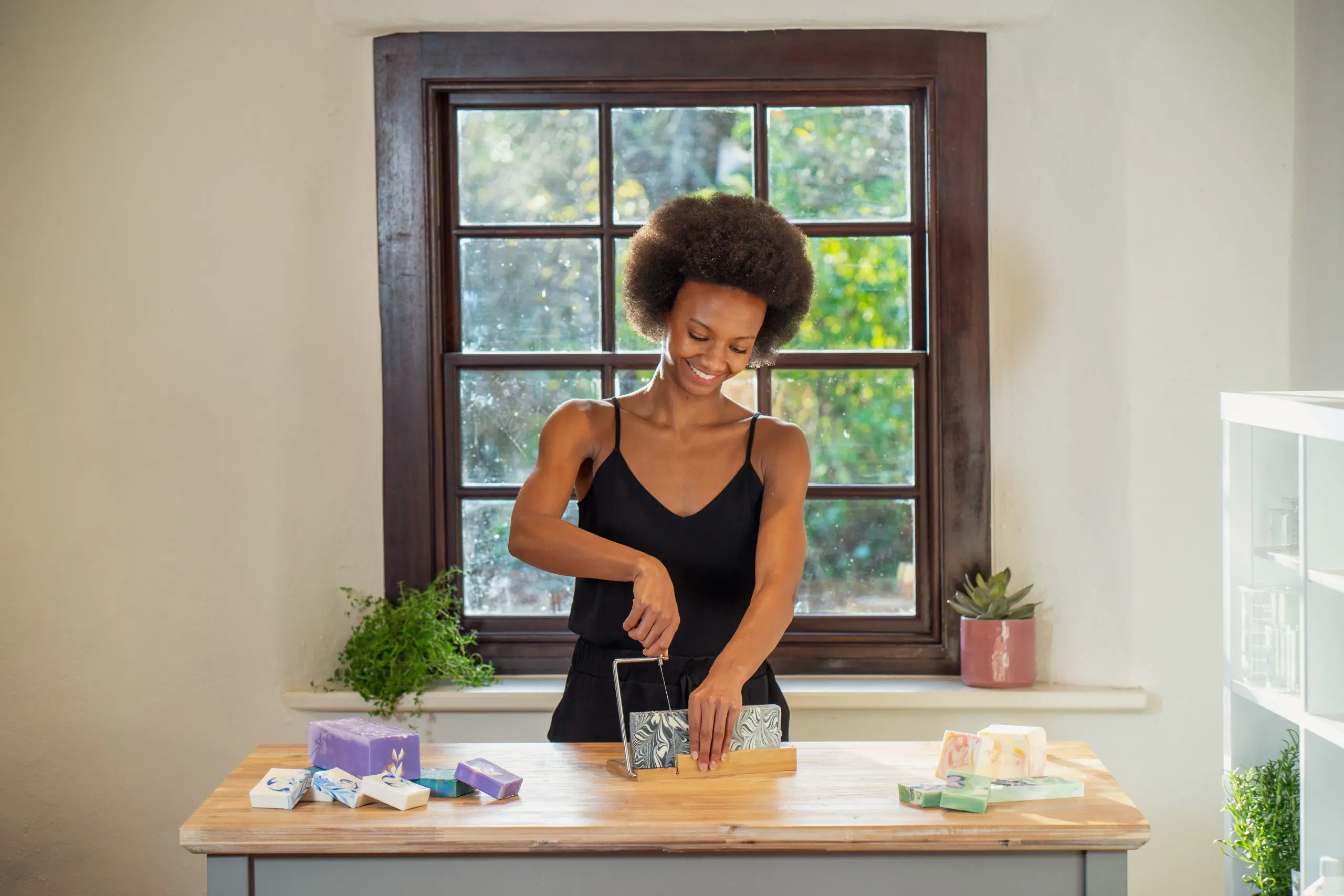
Ready to create beautifully designed, wonderfully crafted and professional soaps?
Sign up to the
Diploma in Soap Making
Here’s what you get:
- Online course: Value $1500
- Tutor support: Value $500
- Community membership: Value $500
Total value:
$2500+
All included
Enroll now for just:
It’s easy to get started
Once you’ve paid you’ll get immediate access to our online classroom.
Instant access to the
whole course for
US $997
Get started straight away.
18 months’ course access inside our Natural Cosmetic Formulation Club.
We accept all major debit and credit cards and Paypal
By joining the course you accept our terms and conditions found here.
Hear what students are saying
With each soap I make, my skills are improving day by day.
- Gay Jimenez,
- Hong Kong
Making soap is so much fun, especially when incorporating designs! I used to struggle with overheating the soap batter, but now I know which oils to use for successful designs. The step-by-step procedures provided in the course have been incredibly helpful for creating beautiful designs.
- Gay Jimenez,
- Hong Kong
Top FAQs
This course is suitable for both complete beginners to soap making and those with some experience.
If you are a complete beginner, you’ll start from the basics by making simple cold process soap, and progress to advanced soap making, hot process and liquid soap making all in one course.
If you are an experienced soaper confident with cold process soap making already, you’ll learn how to work with advanced ingredients, learn soap swirling techniques, and add hot process and liquid soap making to your skill set.
All ingredients in the recipes provided are approved for use by natural and organic standards such as COSMOS. You’ll work with a wide range of natural carrier oils, plant butters, milk, yogurt, beer, honey, sugar, salt, botanicals, clay, charcoal and more!
Even the more ‘chemical-sounding’ ingredients such as sodium hydroxide and potassium hydroxide are permitted for use in soap making by natural and organic standards. They are used to create the saponification reaction and are not present in the finished soap.
There are several options for coloring soaps, which we cover on the course, including using natural botanical options. Mineral pigments are very useful to create bright, vivid colors and these are nature-identical and approved for use by natural and organic standards such as COSMOS.
It is easy to make vegan soap, and most of the recipes provided in the course are vegan (only a few recipes use milk, yogurt or honey as additional ingredients).
Plenty of palm oil-free recipes are also provided. Where we have used palm oil we have indicated that it is sustainably sourced palm oil.
By choosing organic oils and butter, you can make organic soap for organic certification if you wish.
Soap making involves working with lye (sodium hydroxide or potassium hydroxide) to create a saponification reaction. Both are caustic chemicals so it is essential to follow the proper lye safety guidelines when making soap. We cover lye safety in detail throughout the course and our video demonstrations show you how to make soap safely. A quick guide to lye safety can also be found here: Lye Safety in Soap Making + 10 Safety Tips to Follow.
Once you are familiar with the safety guidelines and wear the proper protective equipment (long, thick gloves, goggles, a mask/respirator and protective clothing), soap making is perfectly safe.
The only risk is attempting to make soap without knowing the safety precautions to follow, which is why we don’t advise following tutorials on YouTube or other social media platforms, as they often skip this important information and fail to show best practices.
Soap-making supplies are very easy to find both online and in brick-and-mortar stores. As part of the course you receive a comprehensive global supplier list, featuring hundreds of cosmetic suppliers from all around the world.
Yes! The course is a fully online training program hosted in our online classroom. It is designed to be taken at home from anywhere in the world. We provide information on ingredient suppliers in many different countries. We have students in over 150 countries, so you’ll join a thriving community of global students!
Yes, when you have finished the course there will be quizzes and several assignments to submit. These are straightforward to complete and based on the material covered in the class. On successful completion, your course certificate will be issued.
Now! You can get started with the course right away.
The course is a self-study, self-paced course so you can study at a time that suits you. All the lessons are pre-recorded, so you don’t need to worry about joining us at a set time.
You will have access to the course inside our Natural Cosmetic Formulation Club for 18 months from the date you enroll. You will be able to download the course textbooks to save on your own computer. Extension options are available if you wish to extend your course access.
A variety of formats are used, including comprehensive and beautifully designed course textbooks (provided as PDFs), video demonstrations, quizzes and activities.
Soap can be made with some basic kitchen/lab equipment. Here is a list of the equipment that you should consider using:
- Protective equipment (clothing, goggles, mask/respirator, heavy-duty gloves).
- Heating equipment to melt butters, eg bowls and saucepans to create a double boiler.
- Containers/beaker/bowls for weighing and mixing. You will need heat resistant and chemical resistant containers to make your lye solution in, to melt the oils and to mix the soap in. Materials suitable for soap making are glass (eg Pyrex bowls, laboratory beakers), stainless steel and polypropylene plastic (common kitchen mixing bowls). Avoid all contact with aluminum.
- A thermometer. Inexpensive glass lab thermometers are sufficient, or you may like to invest in an infrared thermometer.
- A stick blender (hand-held immersion blender).
- Scales, ideally digital scales that measure to 0.1g.
- Silicone spoon and spatula.
- Stainless steel spoons and whisk.
- Soap making molds, for example silicone molds or wooden loaf molds. A soap cutter is useful for cutting soap loaves into your desired bar size.
In addition, for hot process and liquid soap making a slow cooker (crock pot) is required.
More details and supplier suggestions are included in the course.
We are an international school with students worldwide. US dollars are the most widely recognized and accepted currency. You can check the exchange rate for your local currency using xe.com or another currency converter.
We are very proud to have a team of qualified, experienced, professional cosmetic scientists supporting our students. They are here to help you with questions or doubts about ingredients, formulas, methods and guidelines pertaining to your specific course. You can ask them your questions in our weekly Tutor Q&A, hosted on our online platform.
If you are a member of our Natural Cosmetic Formulation Club and have already completed Cold Process Soap Making, then yes, you can continue on to the other parts. You can use your credit allocation to purchase the other parts from the courses dashboard.
If you wish to start with cold process soap making then you can enroll on just this part of the course. Learn about our Certificate in Cold Process Soap Making course.
What will I learn in the Diploma in Soap Making course?
Our course covers everything from the basics of soap making to advanced techniques, including how to formulate your own soap recipes. You’ll learn cold process, hot process and liquid soap making.
Do I need any prior knowledge to enroll in the Diploma in Soap Making?
No, our course is suitable for beginners as well as those with some experience in soap making.
What can I do after completing the Diploma in Soap Making? After completing the course, you can create soaps for personal use or start your beauty range. You’ll have the knowledge and skills to formulate a wide range of cold process, hot process and liquid soaps.
Can I make organic soap in the Diploma in Soap Making course?
Yes, we teach how to make organic and natural soaps using high-quality ingredients.
Can I interact with instructors during the Diploma in Soap Making course?
Yes, we have a dedicated team of instructors available to answer your questions and provide guidance.
How do I sign up for the Diploma in Soap Making course?
You can sign up for our course directly on our website by using the ‘Enroll now’ link above. If you have any questions, feel free to contact us at [email protected].
What is the cost of the Diploma in Soap Making course?
The Diploma in Soap Making costs US $997.
Explore our articles
Want to try before you buy?
Sample a selection of our course material inside our online classroom.

